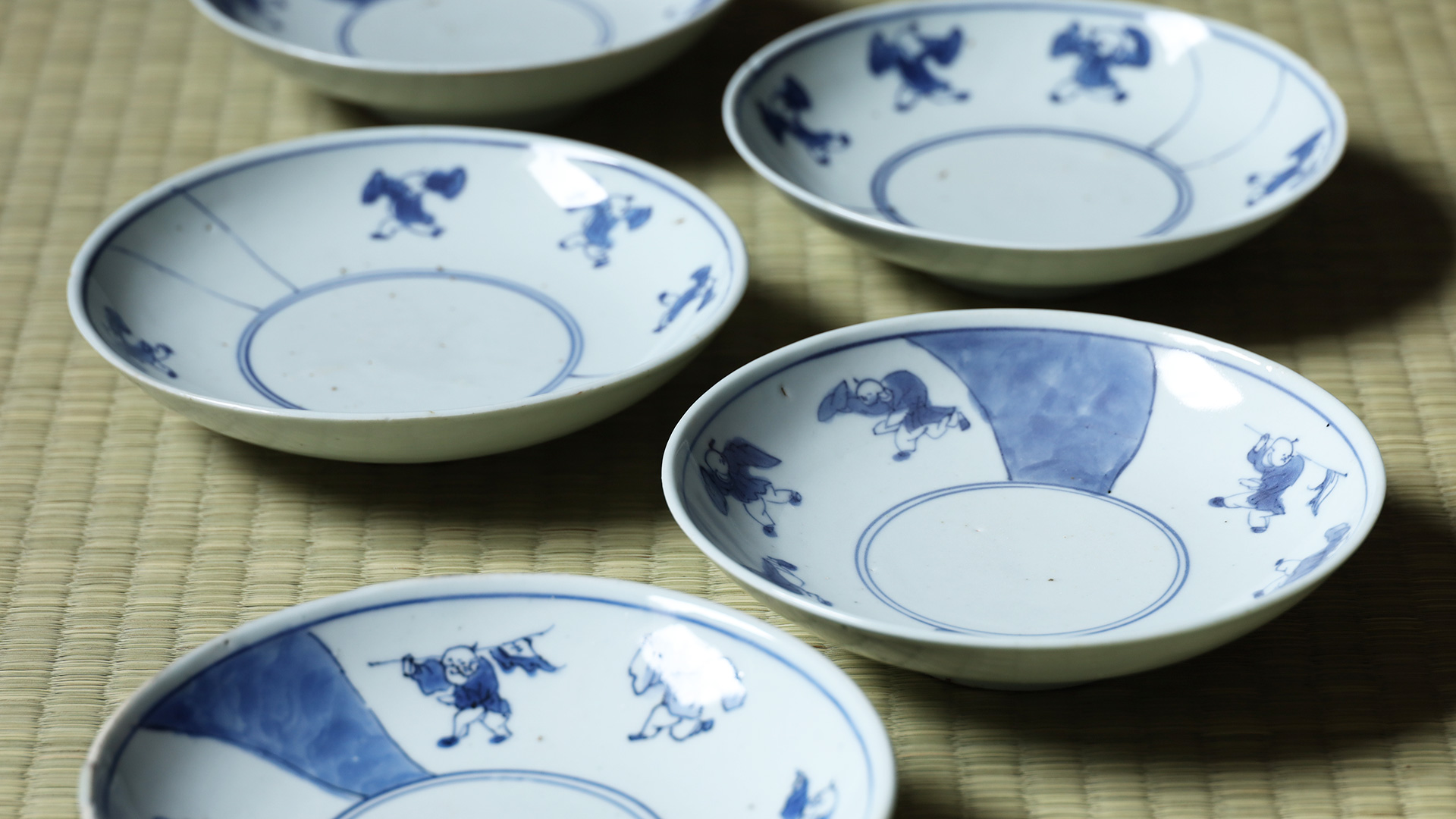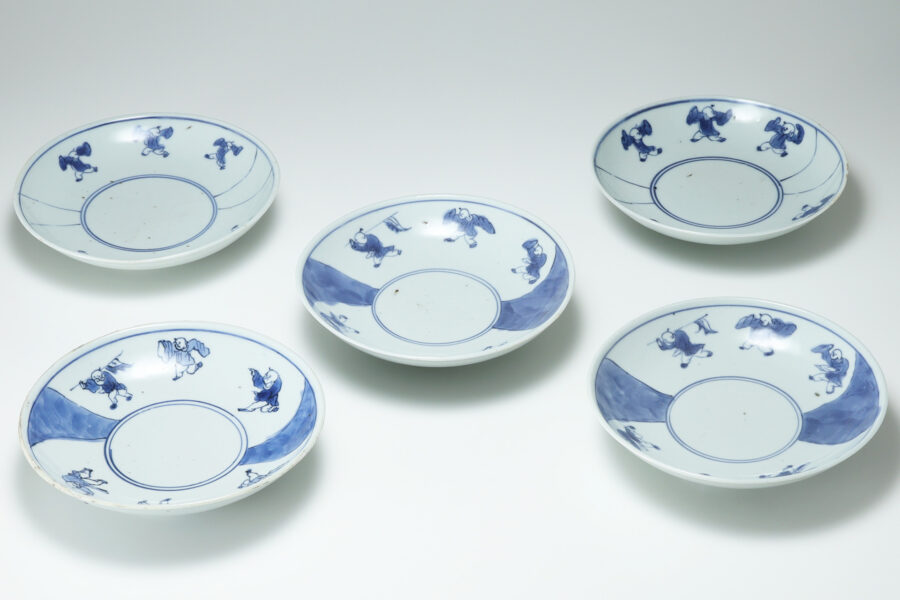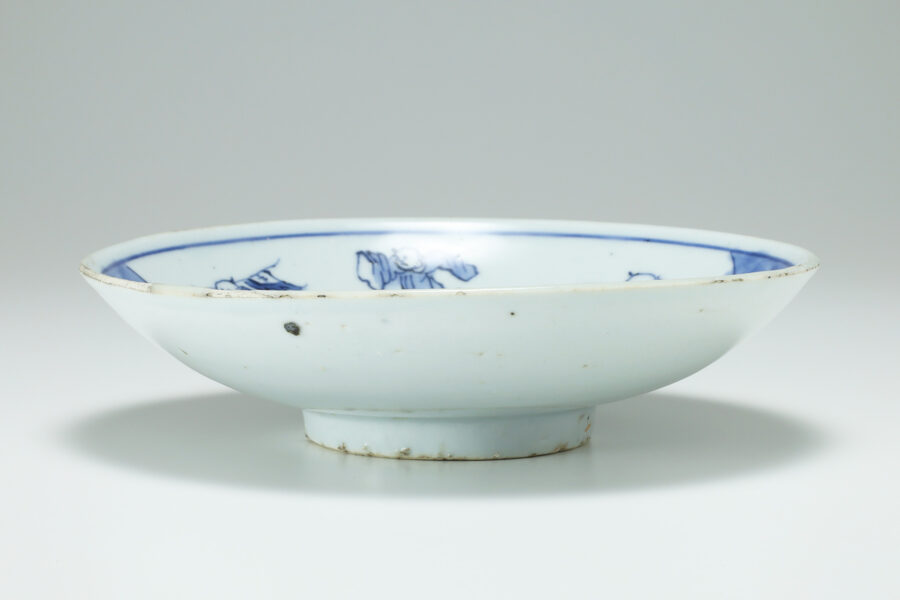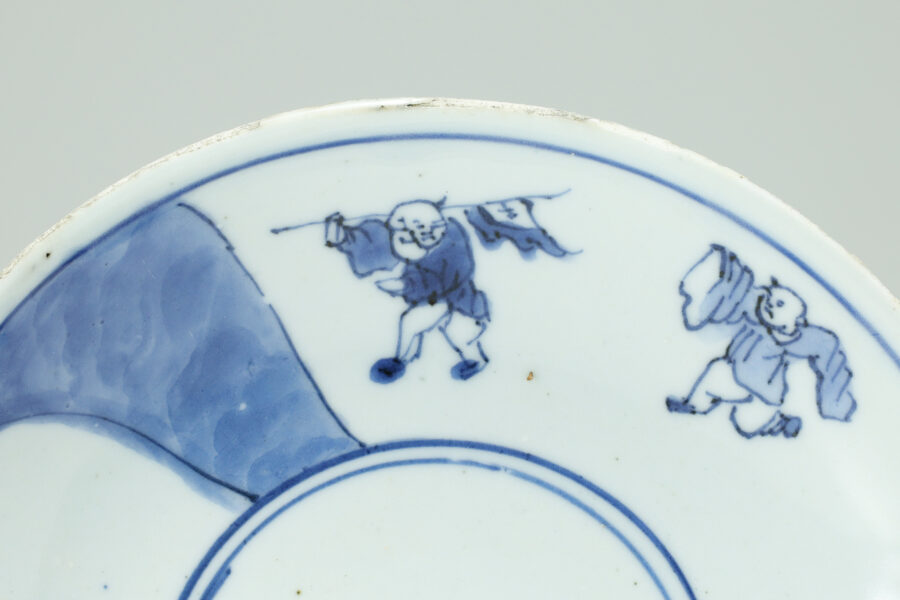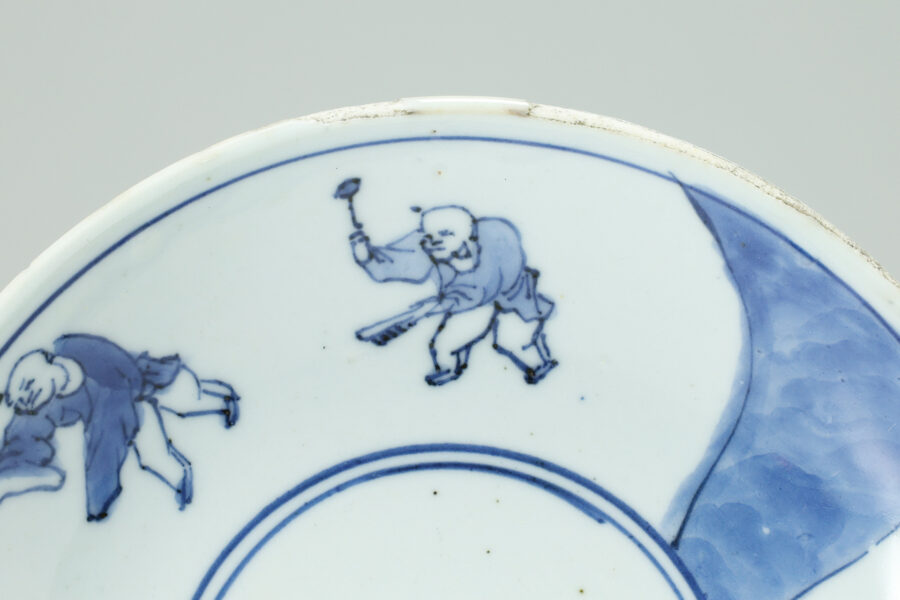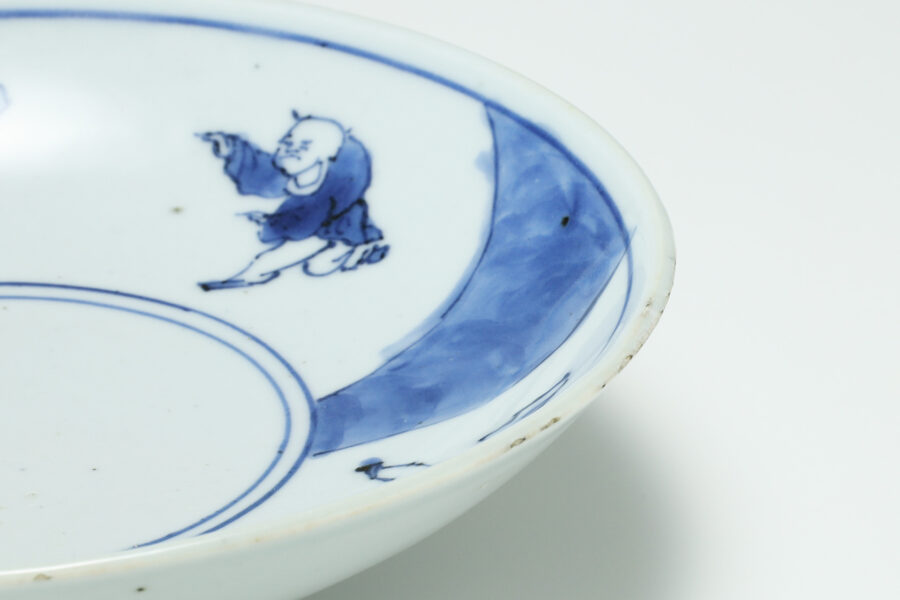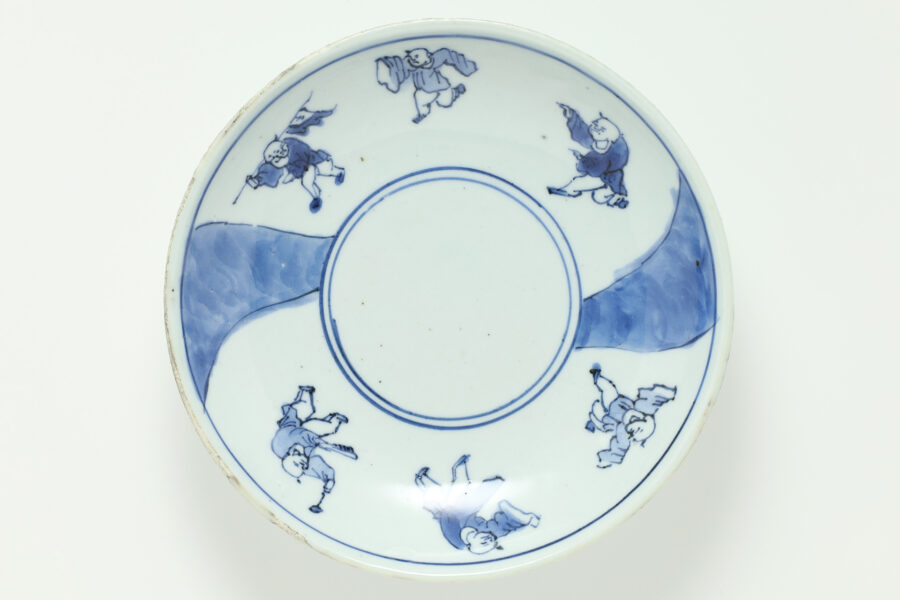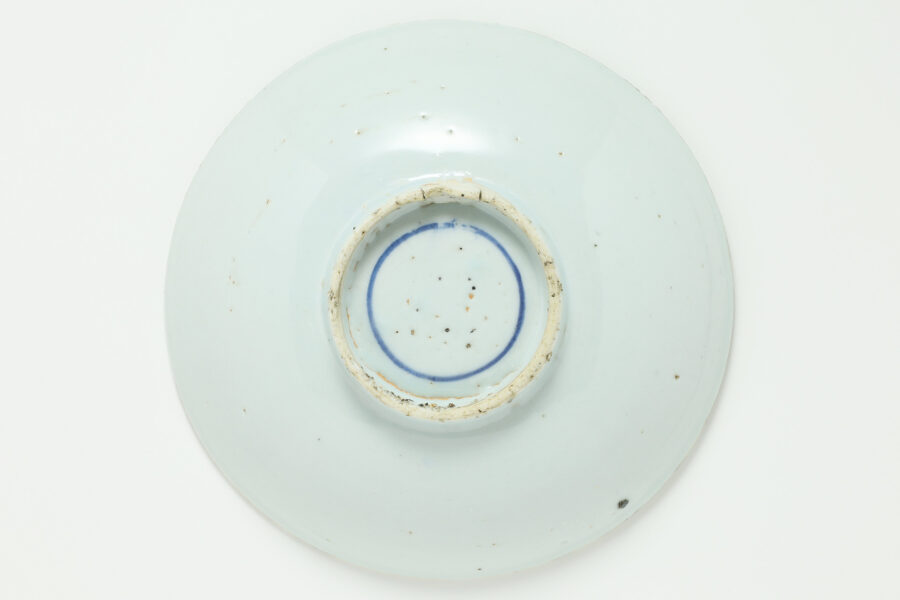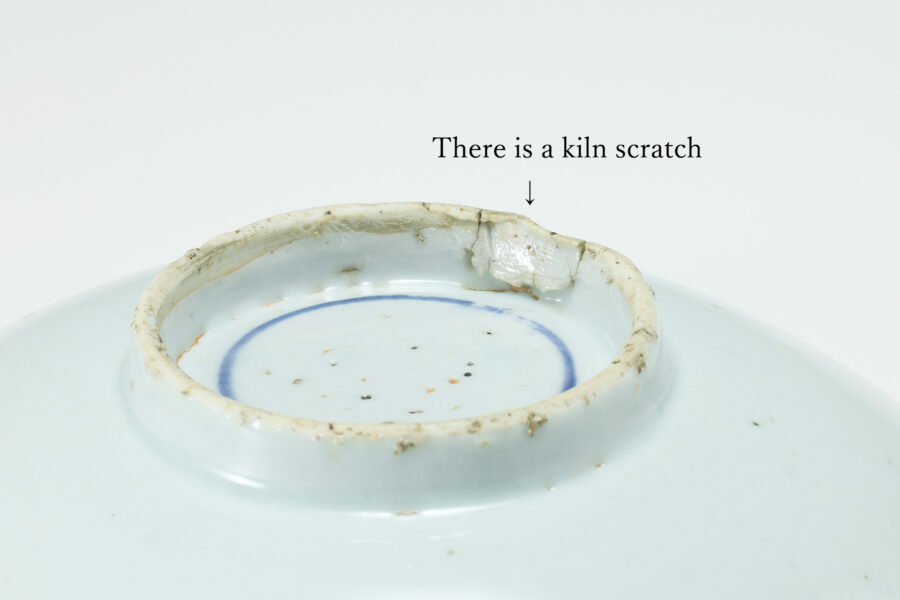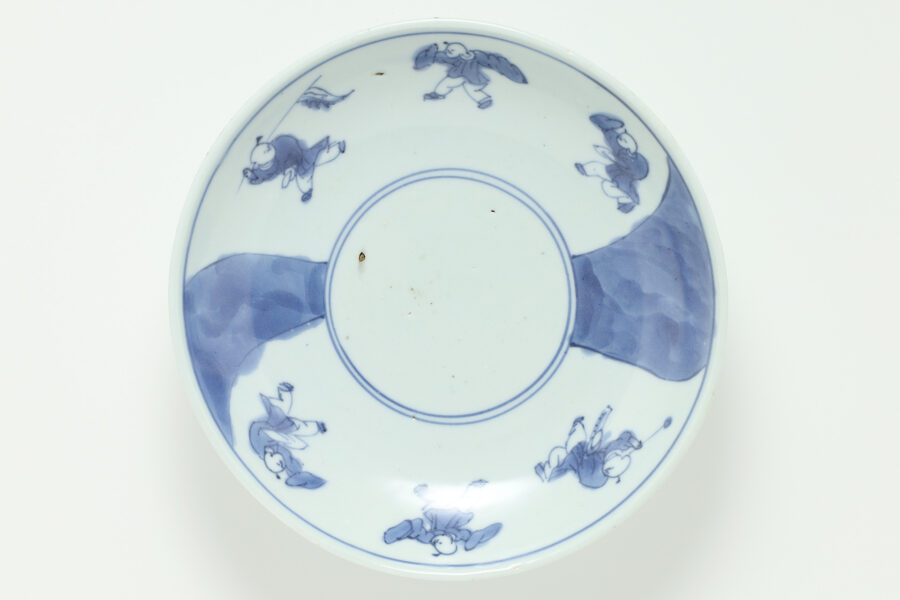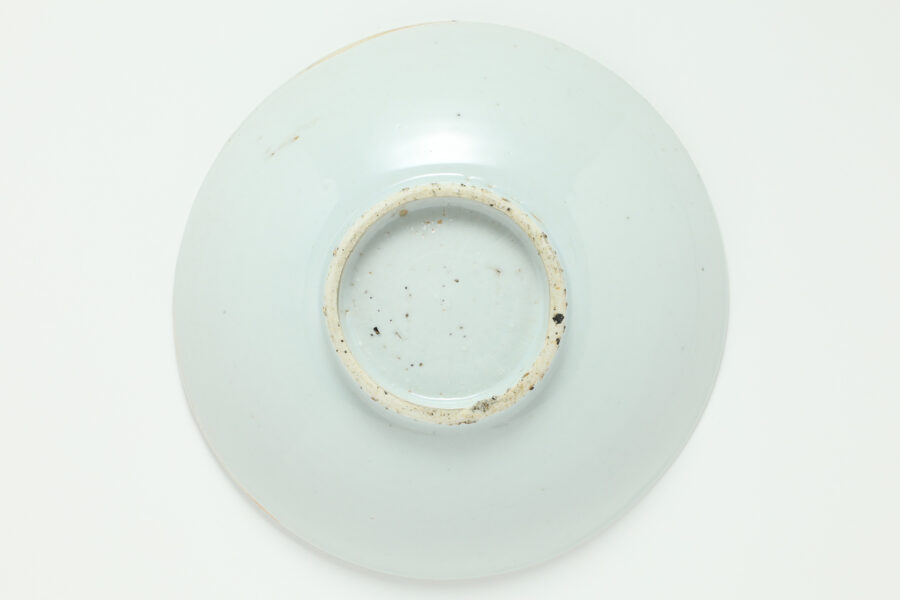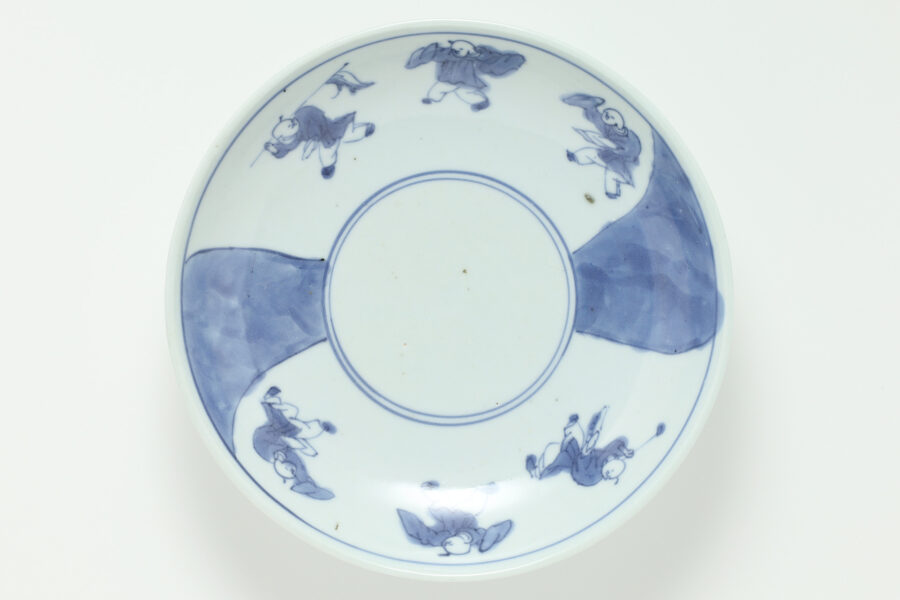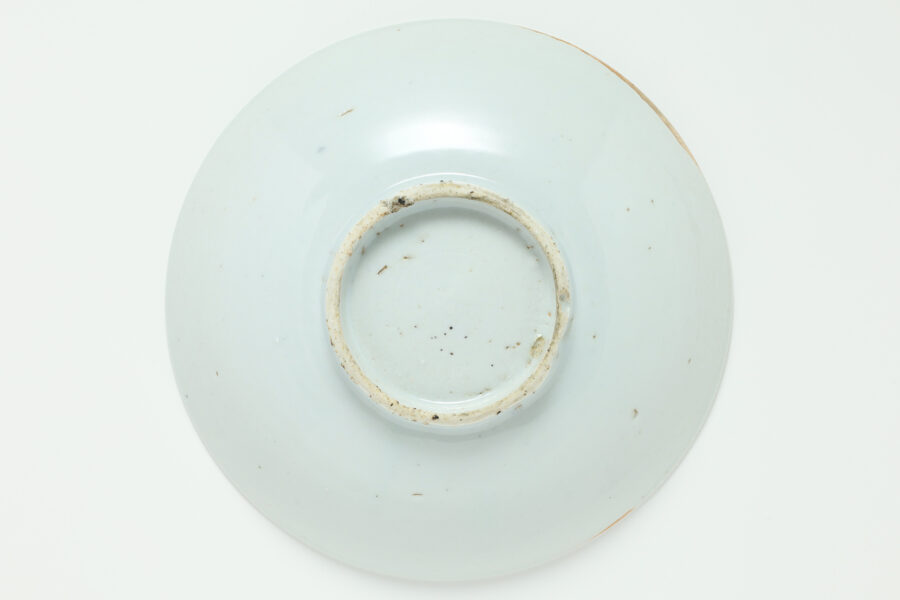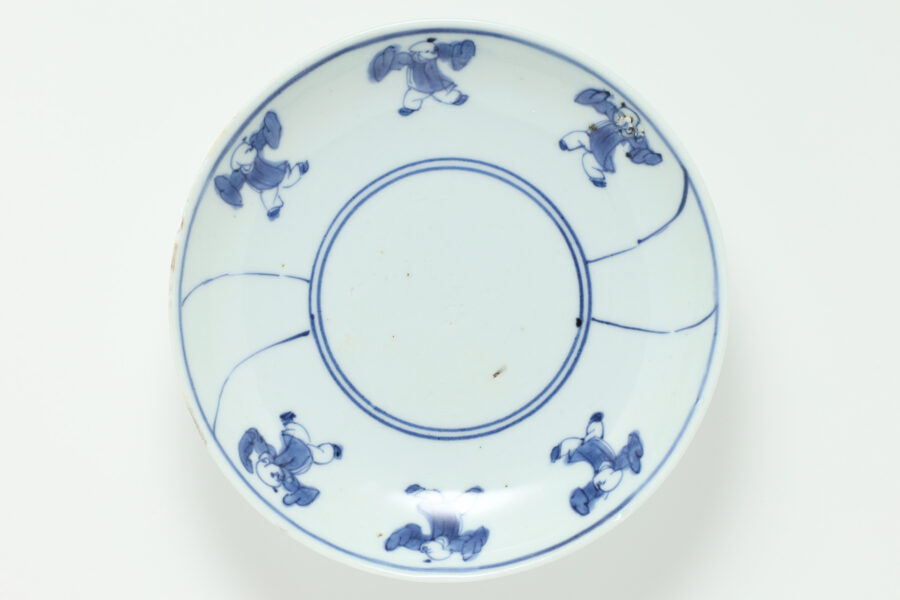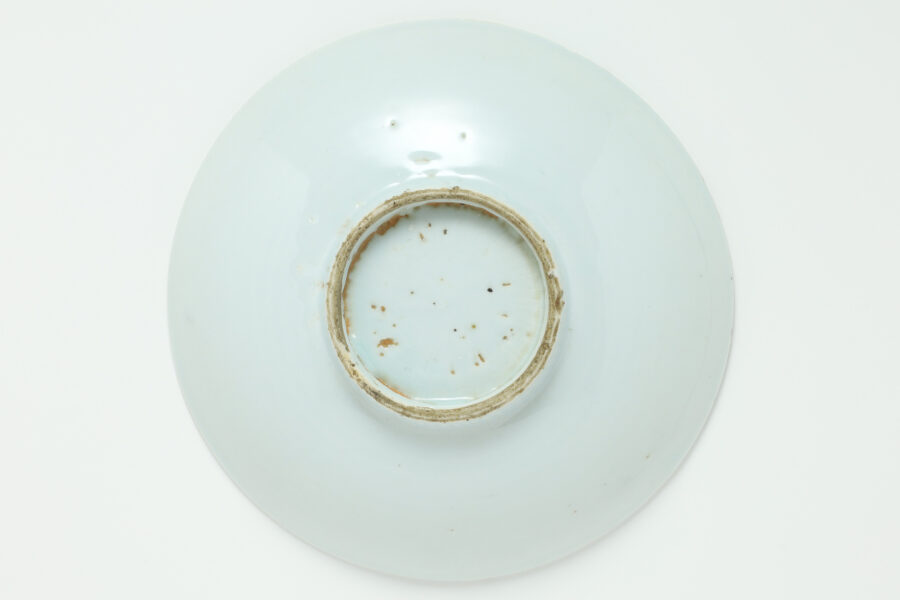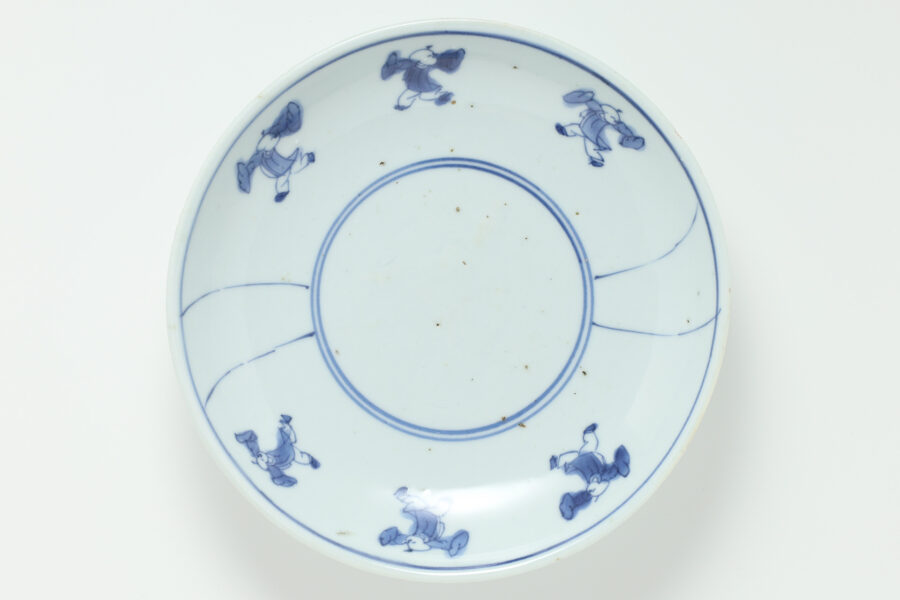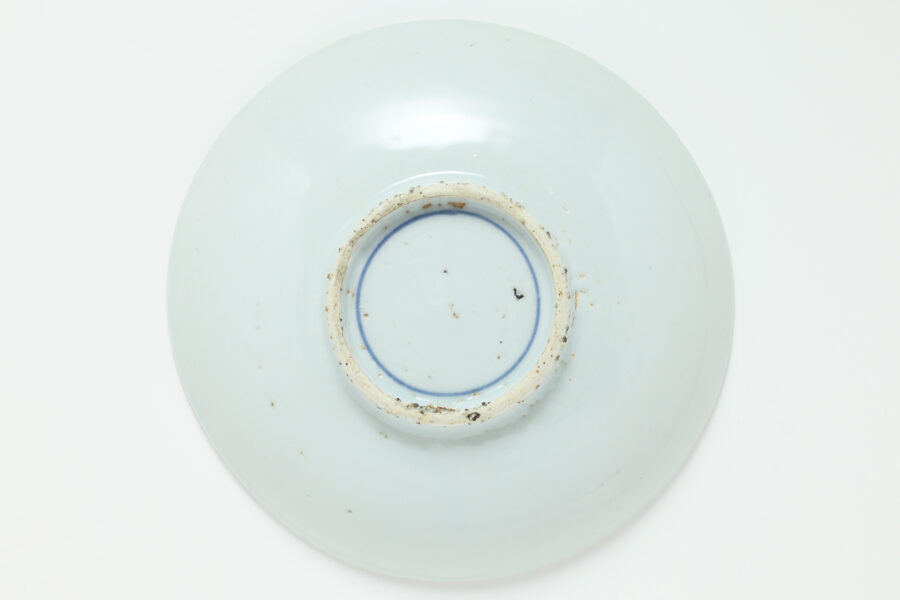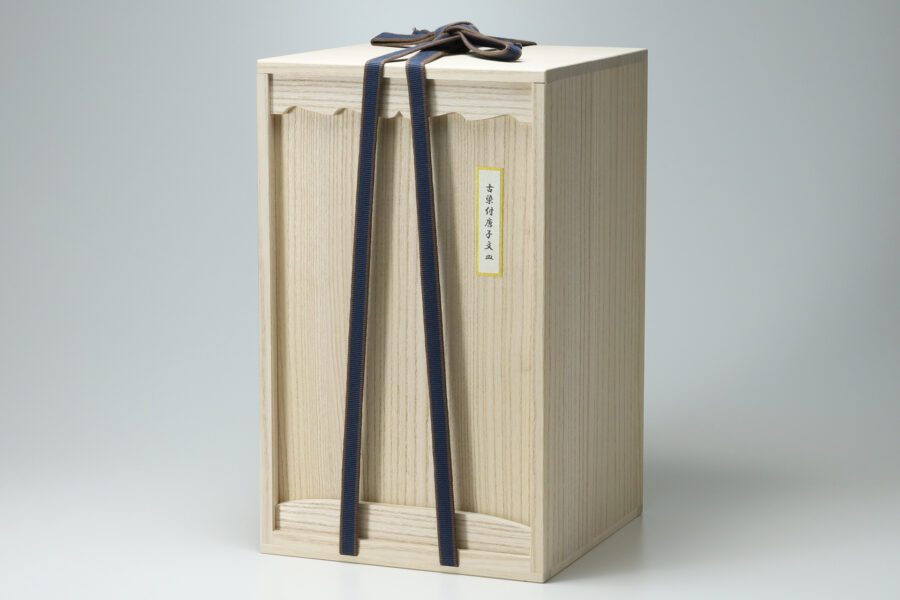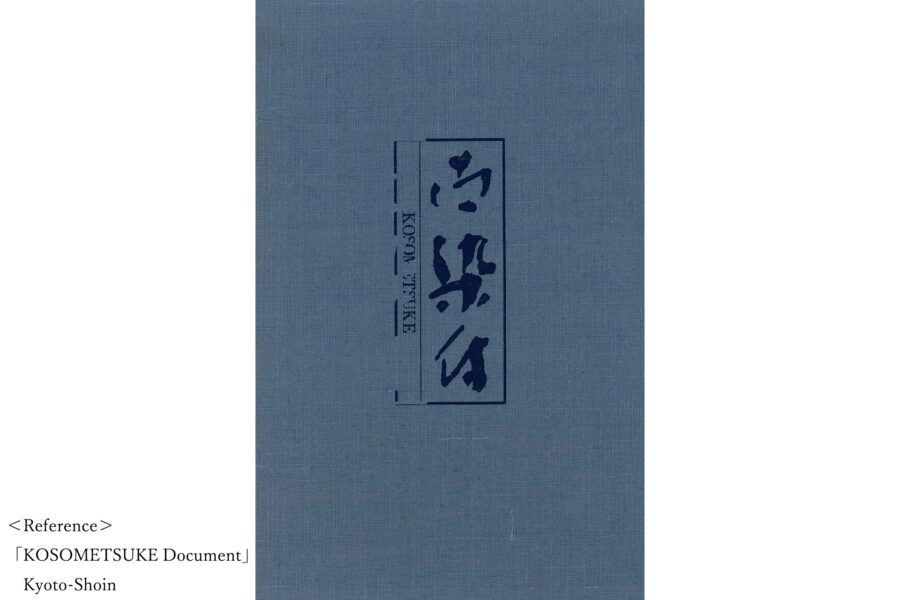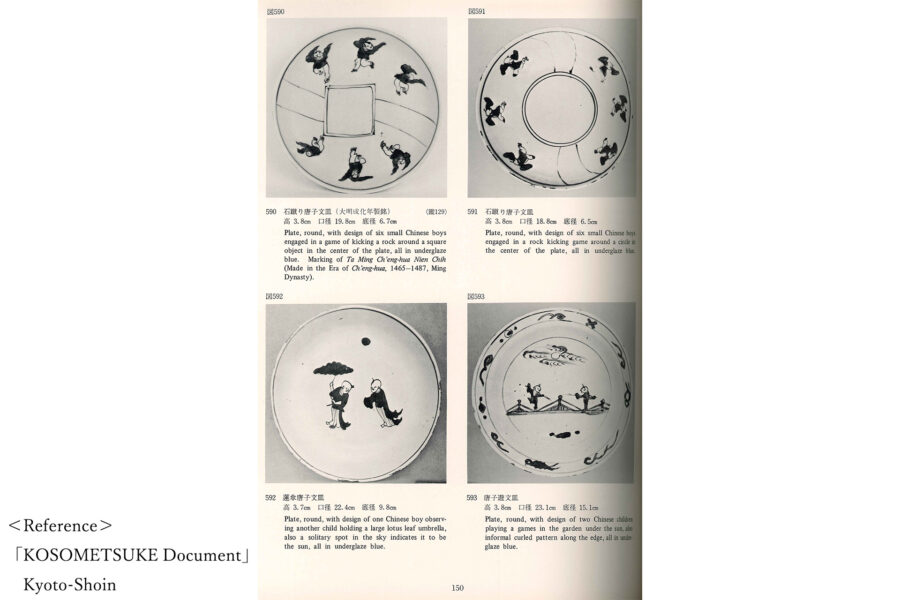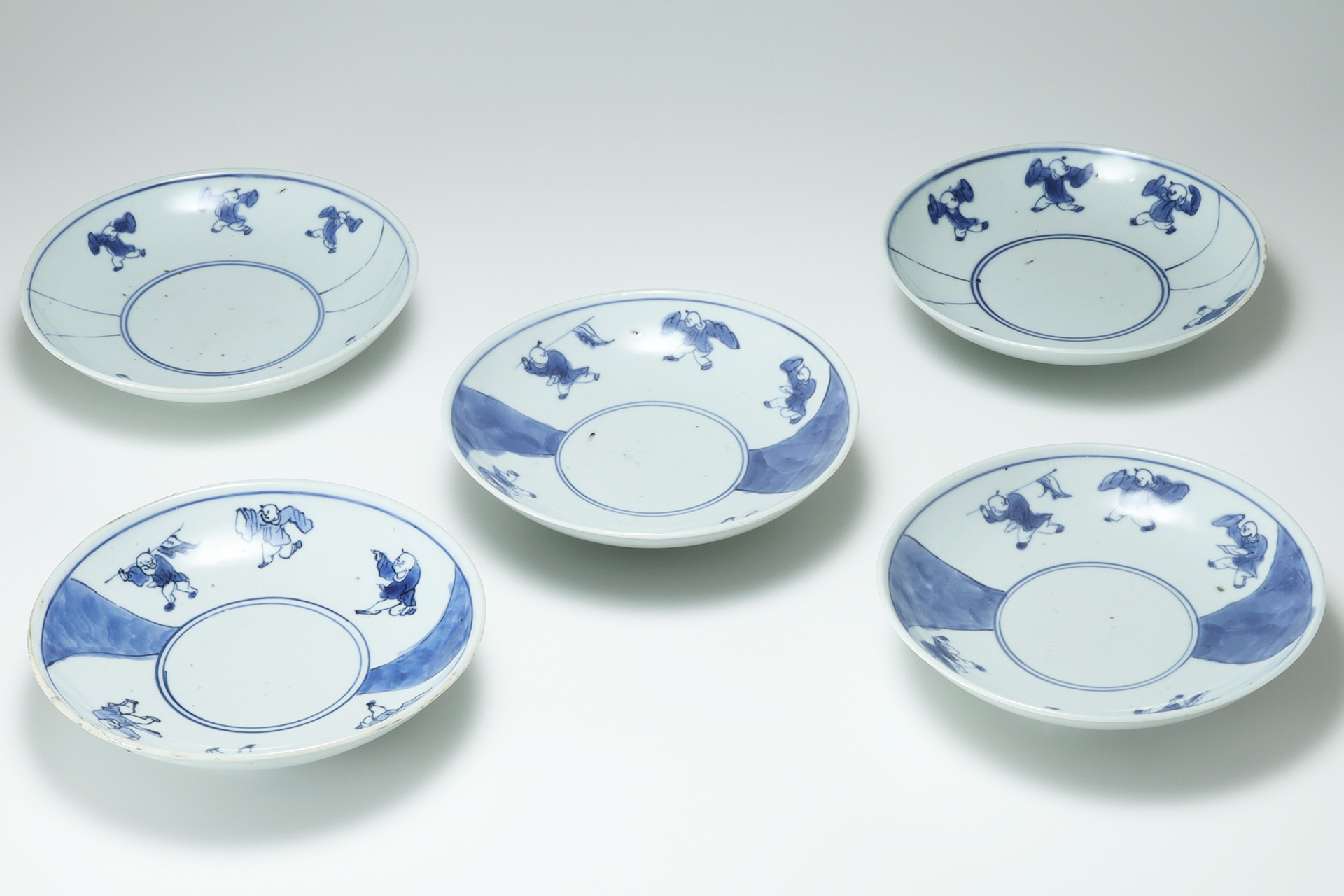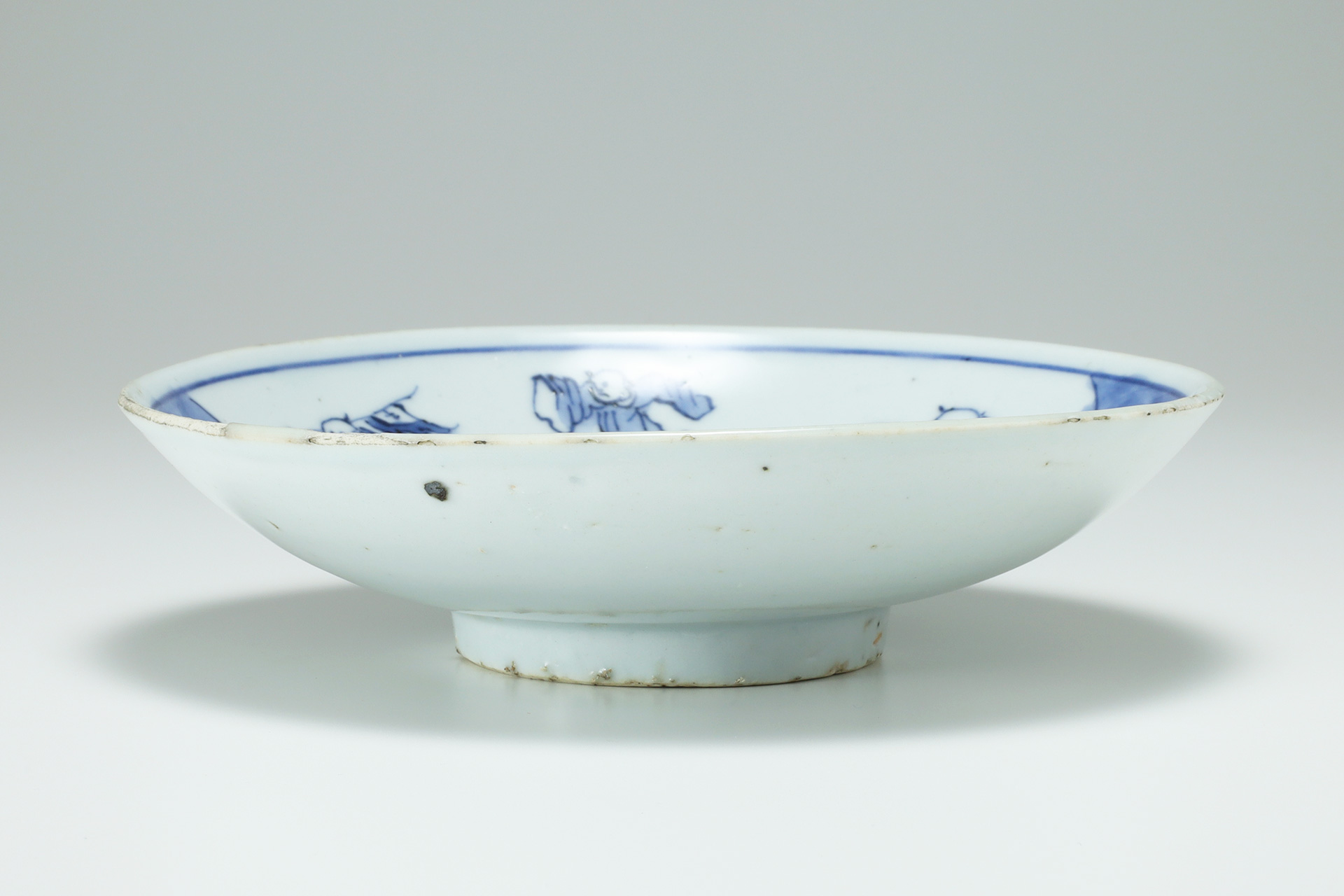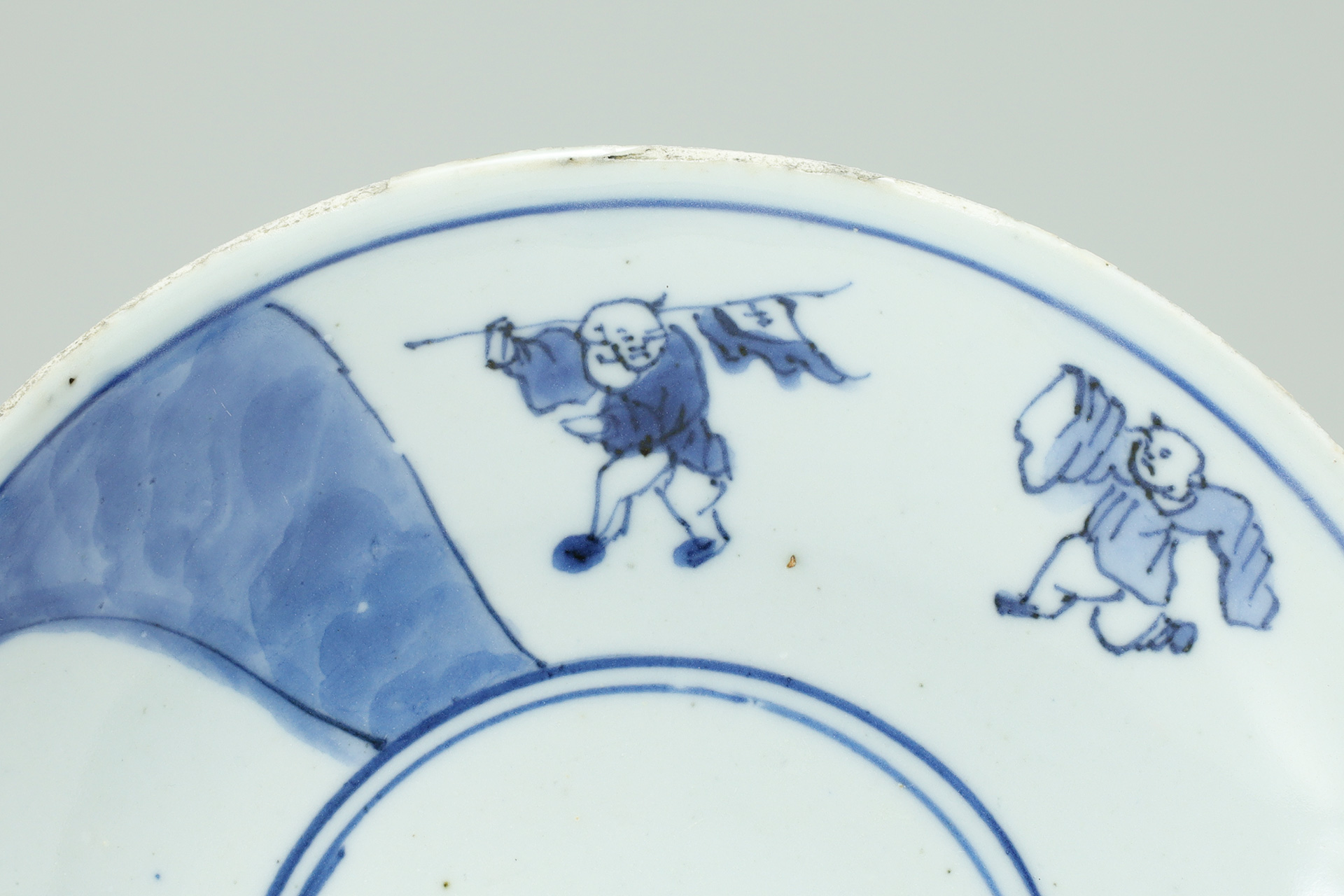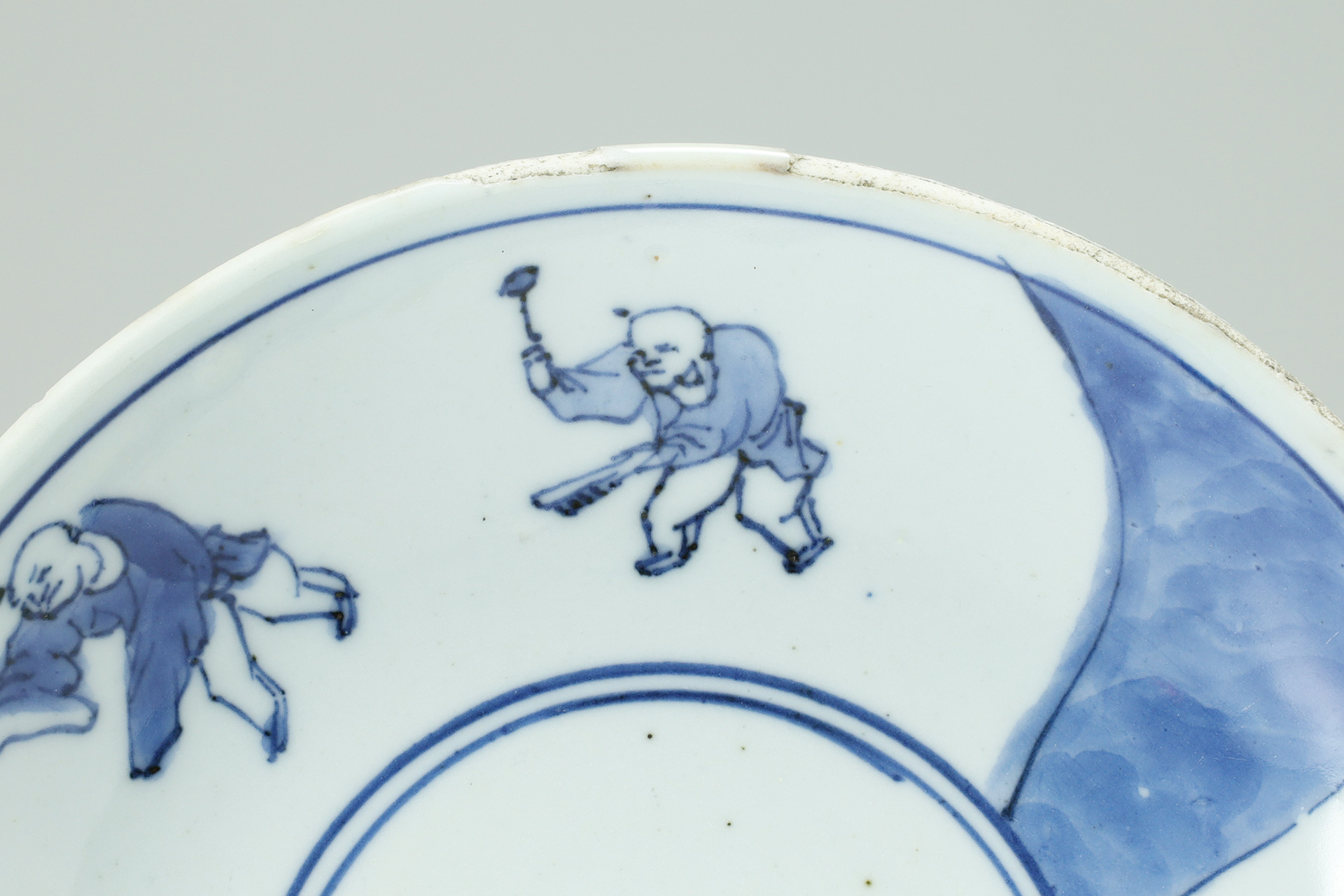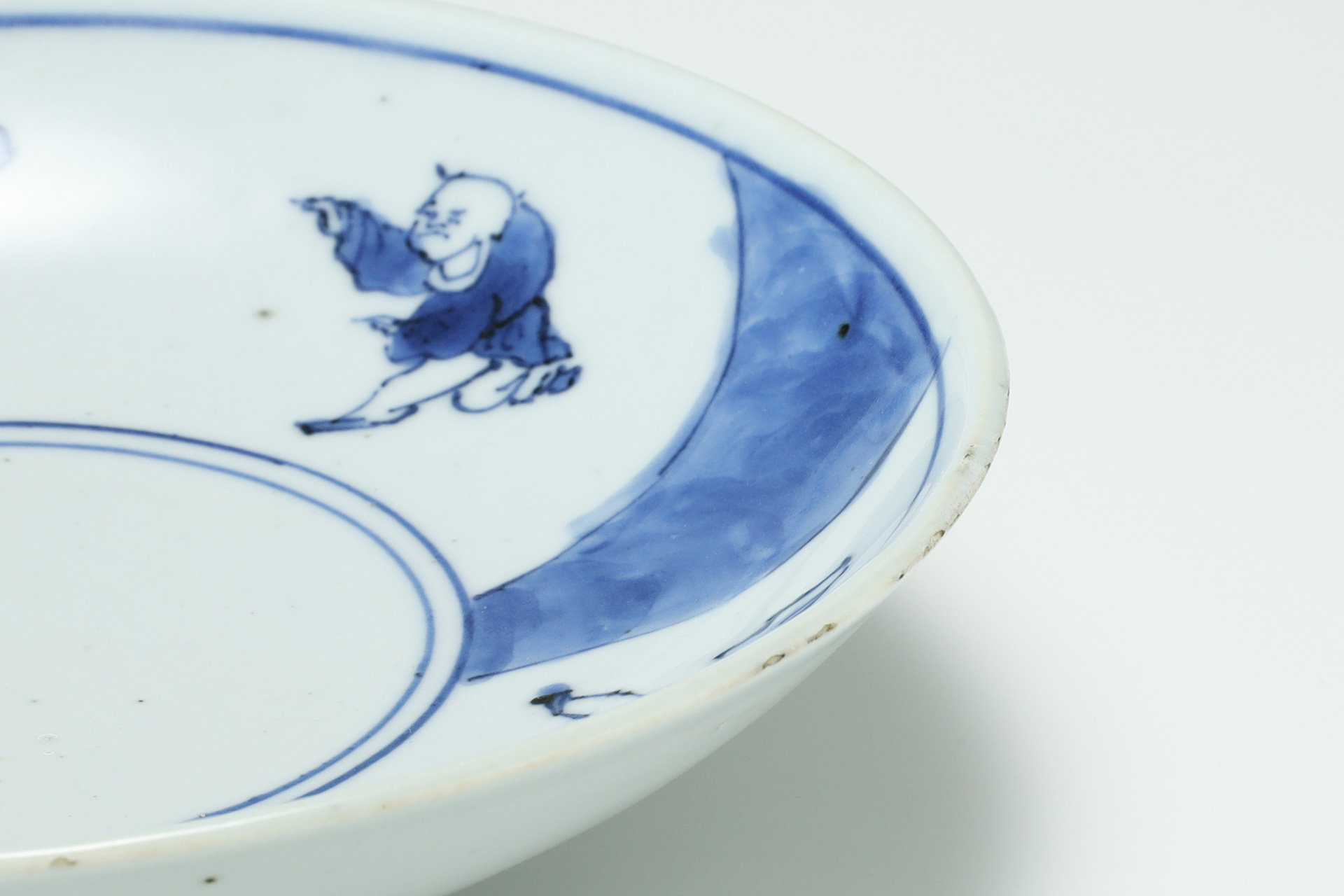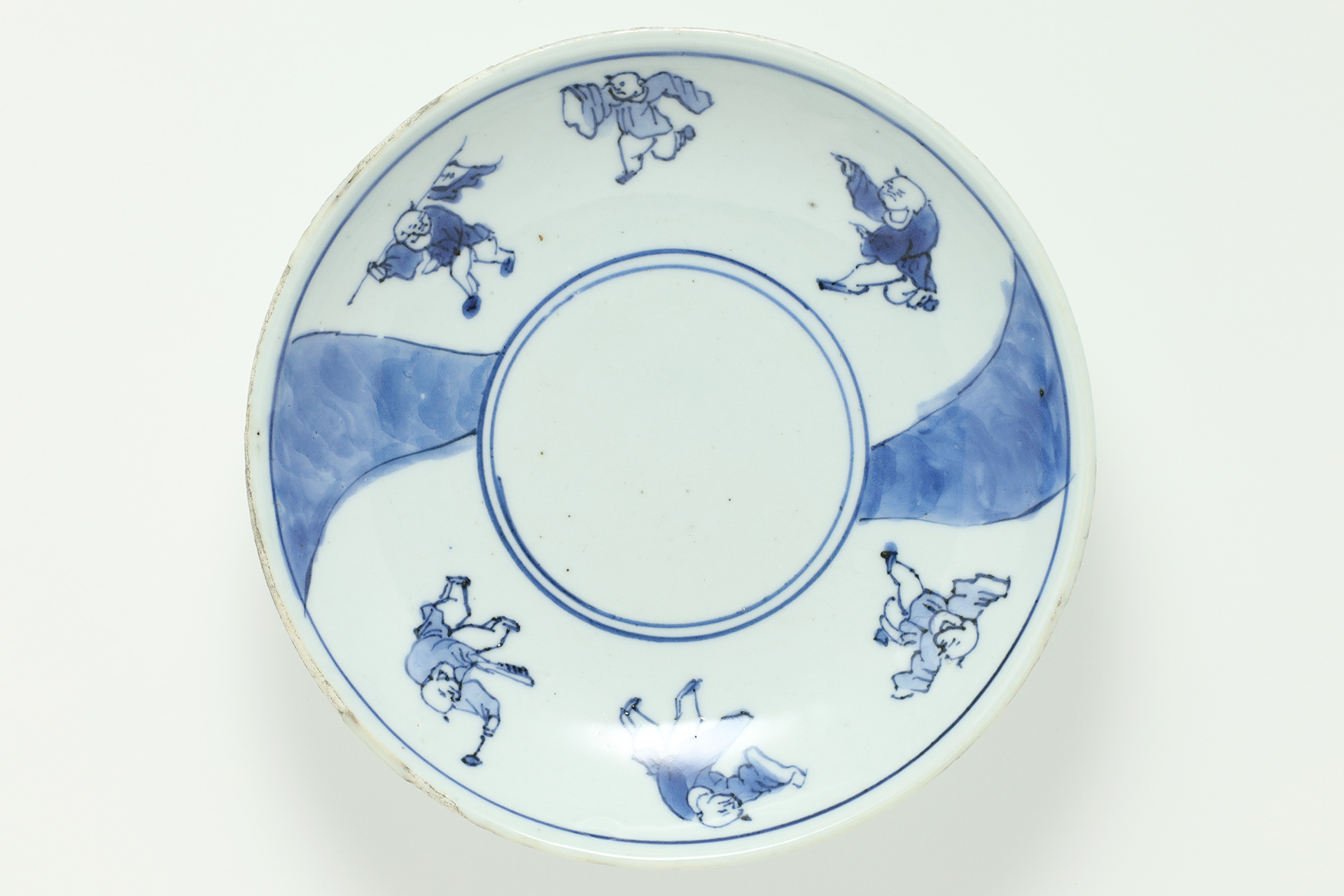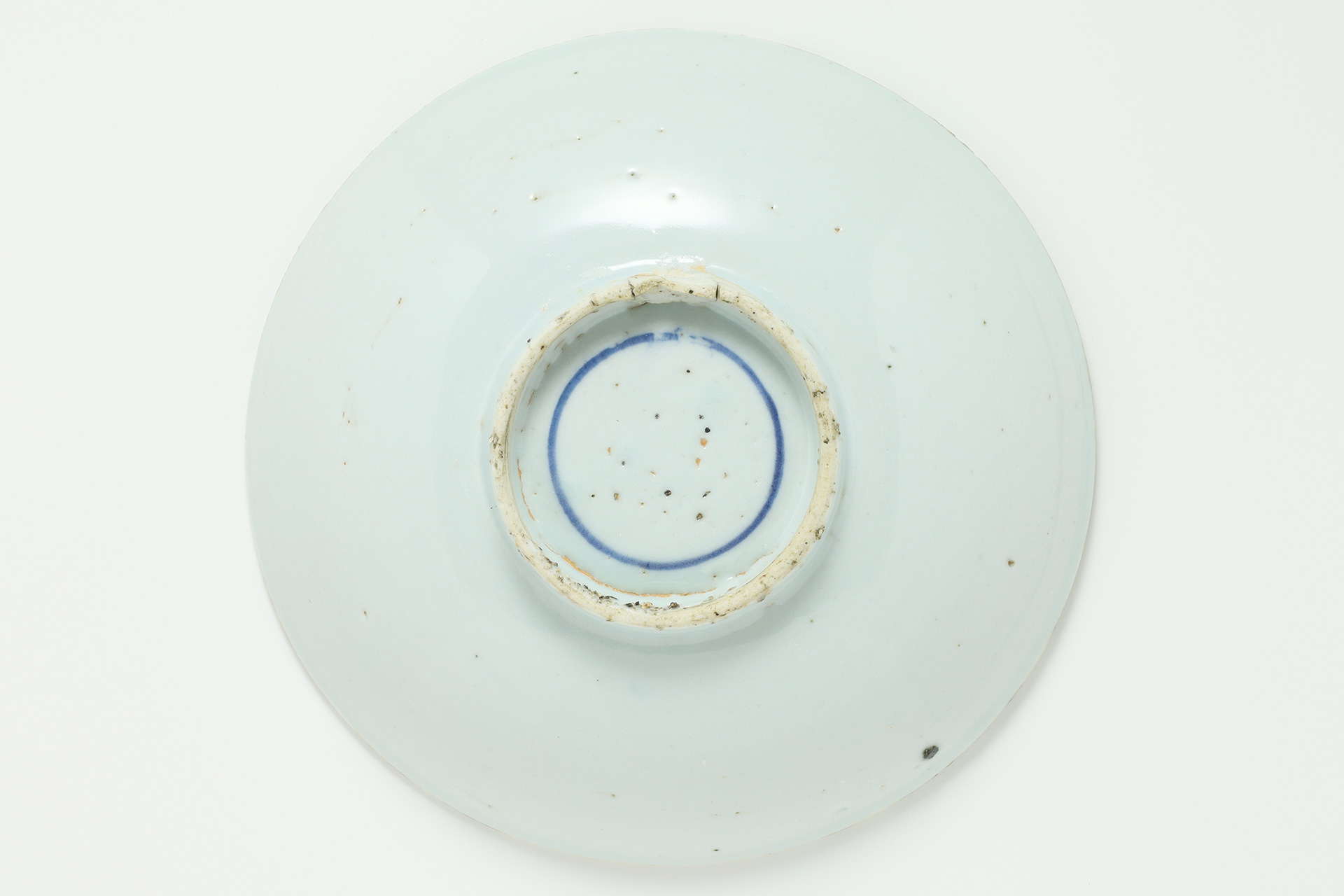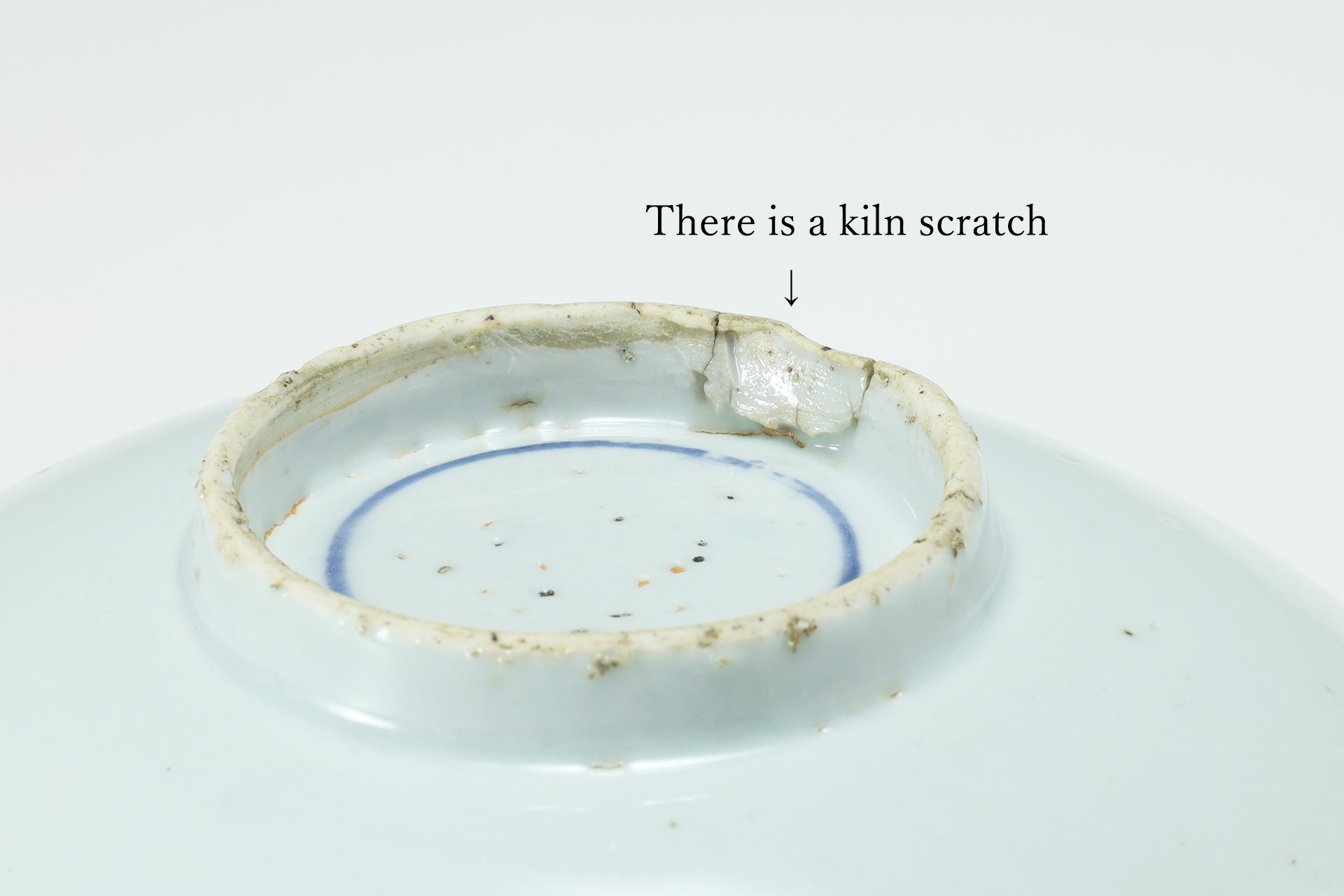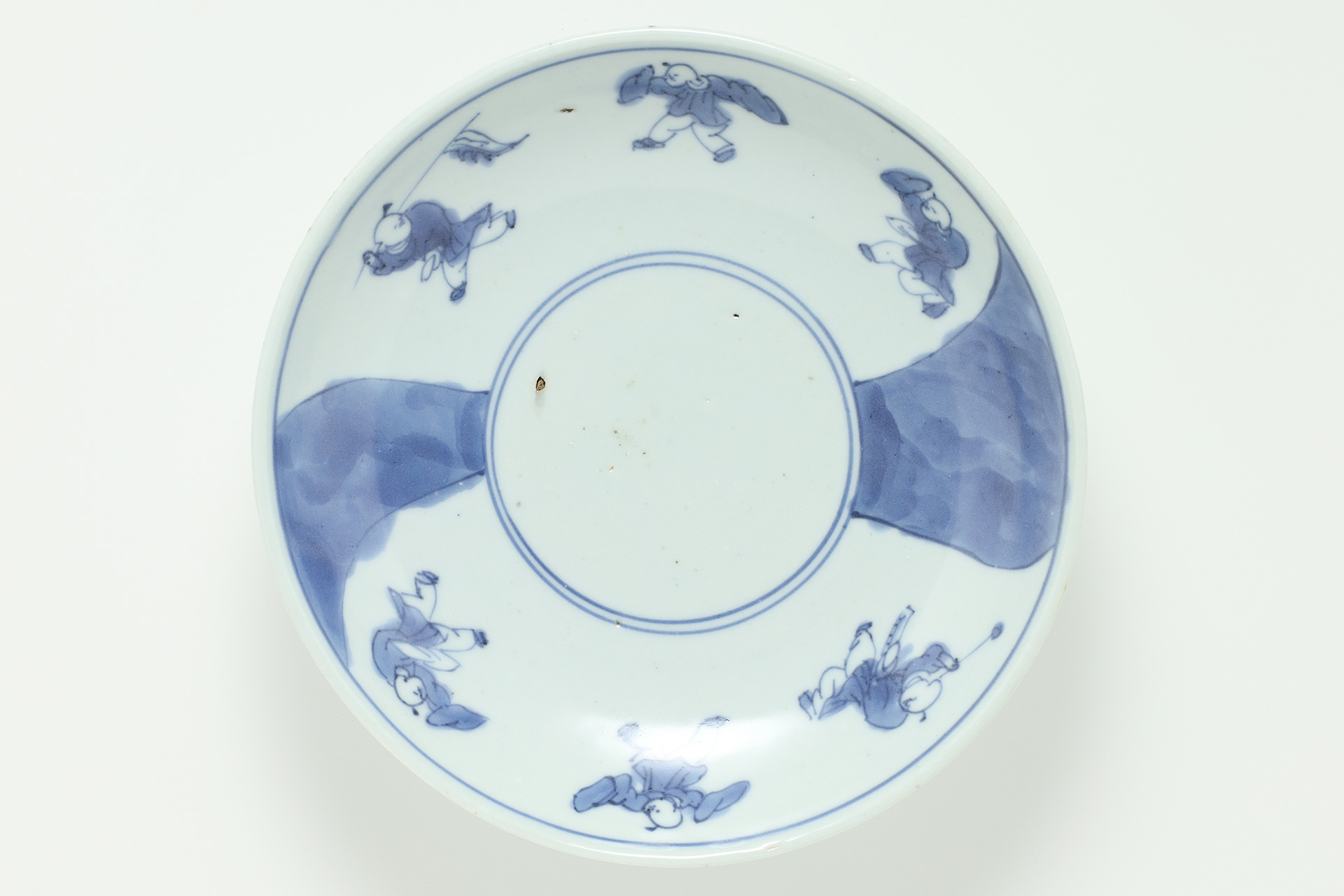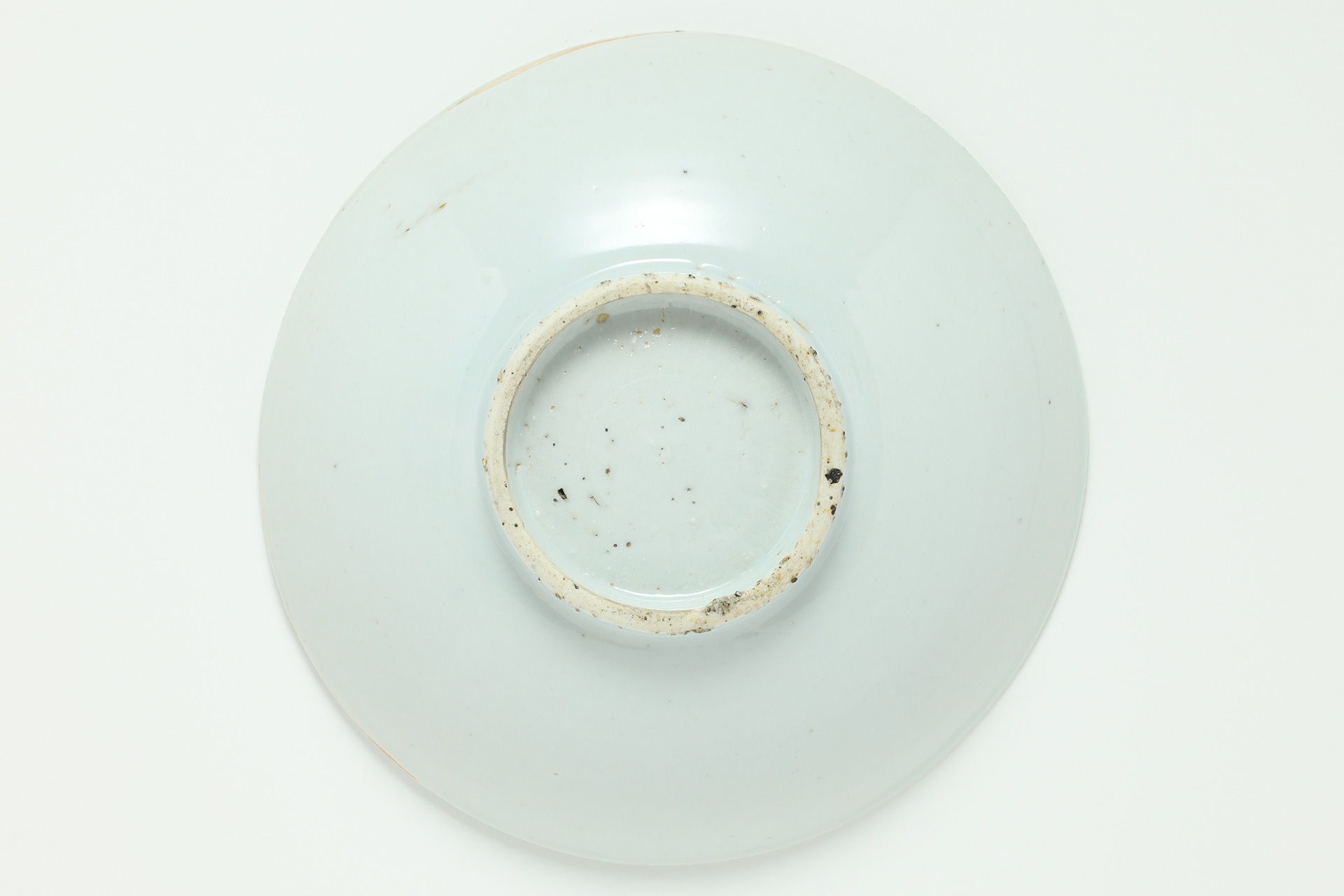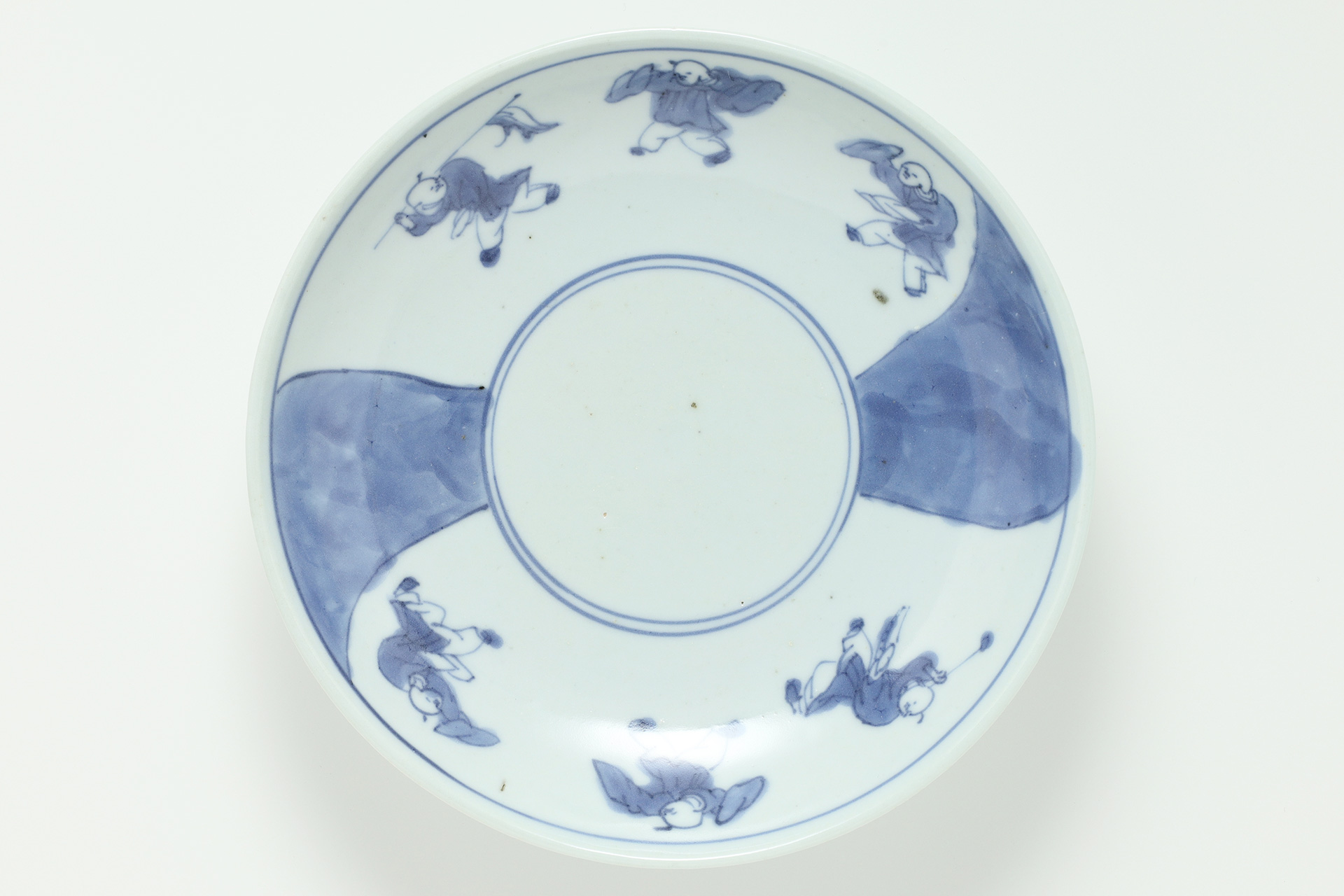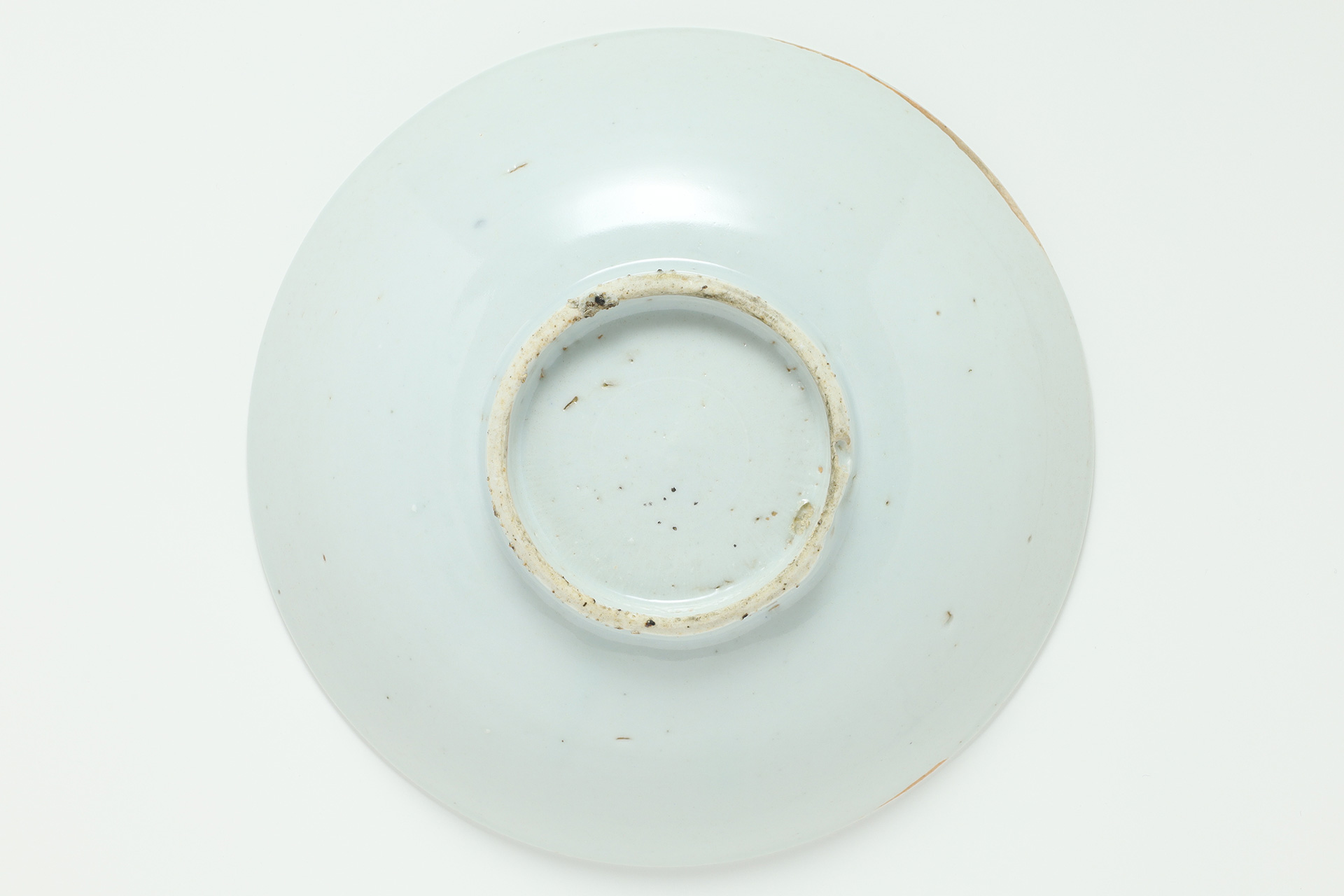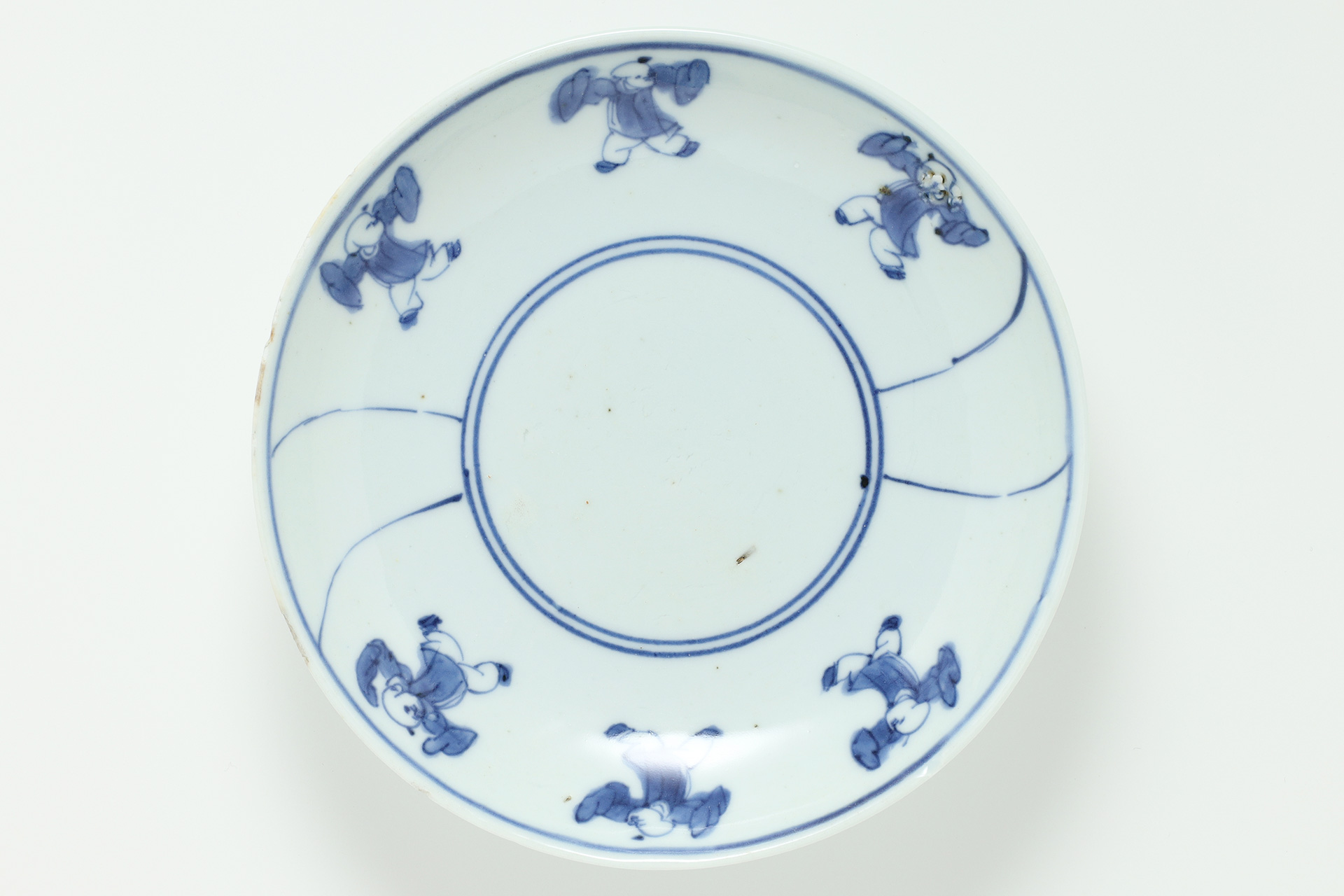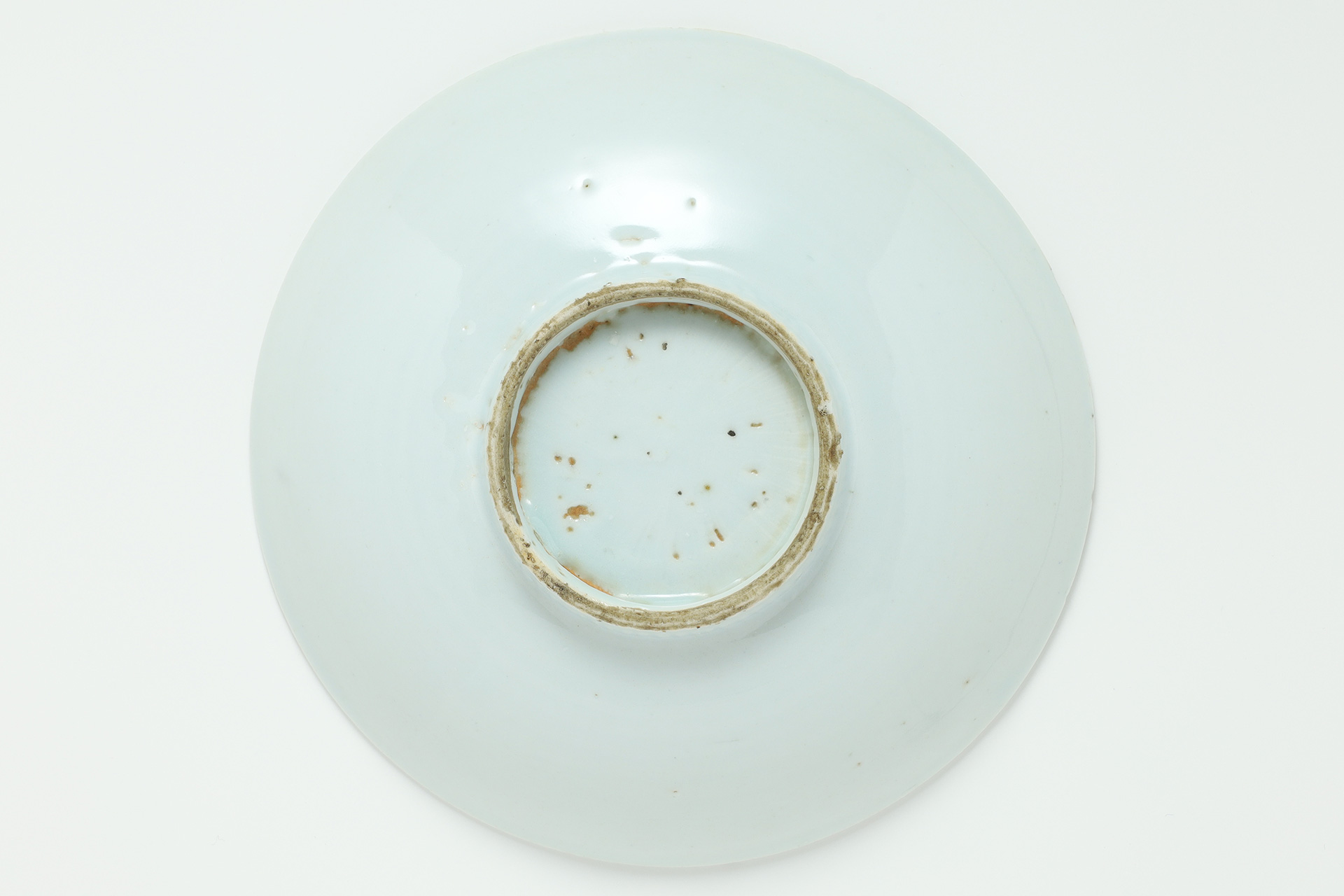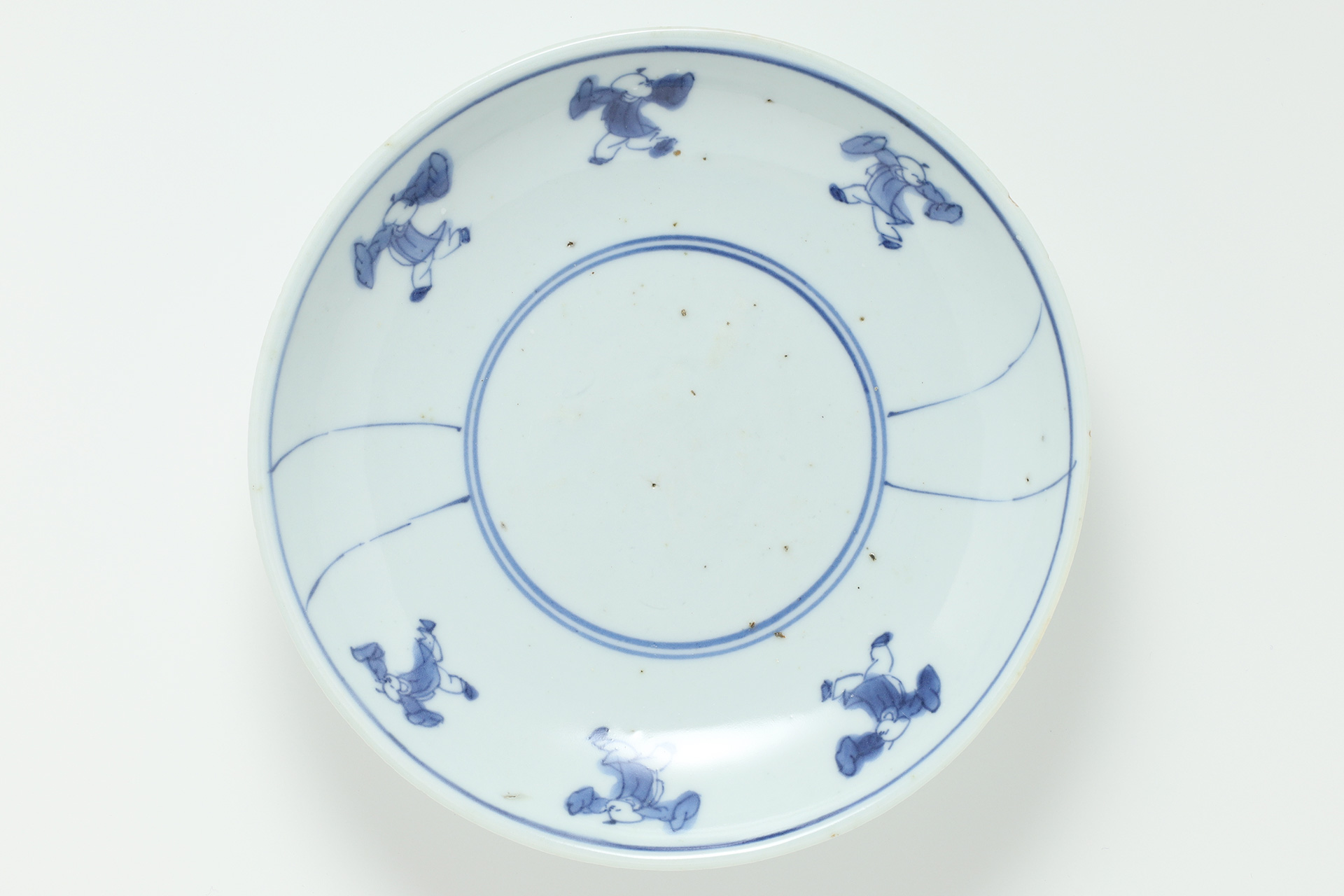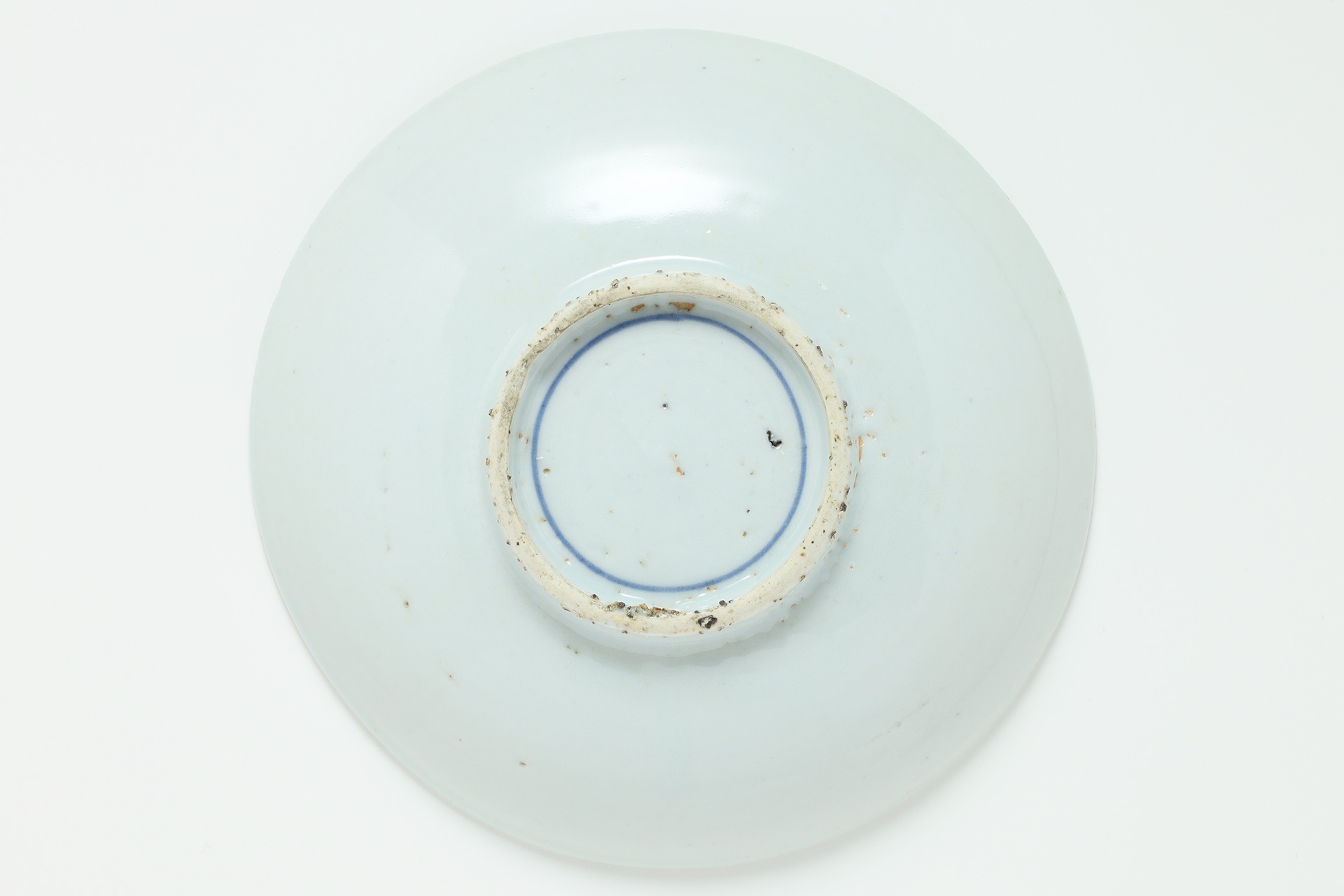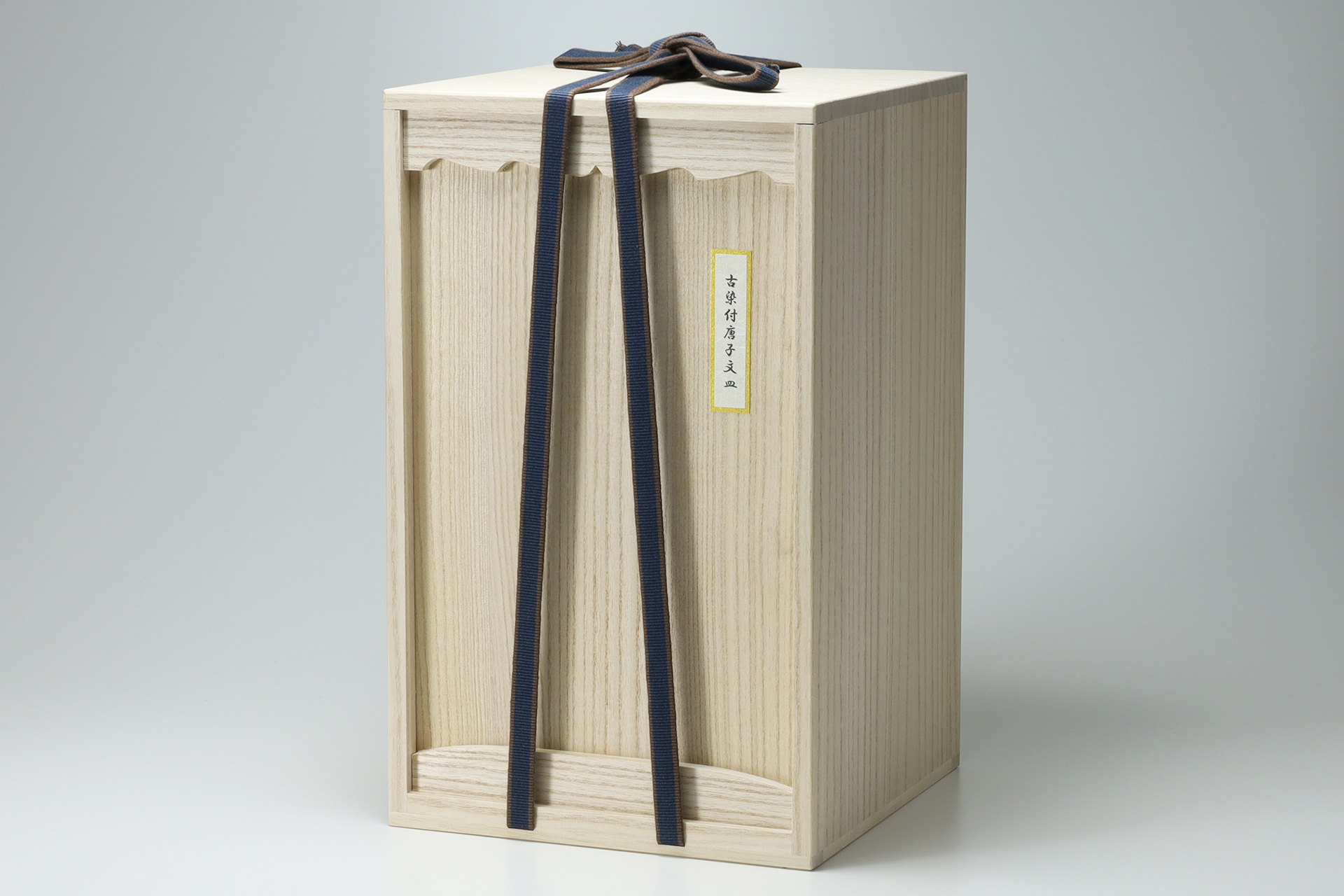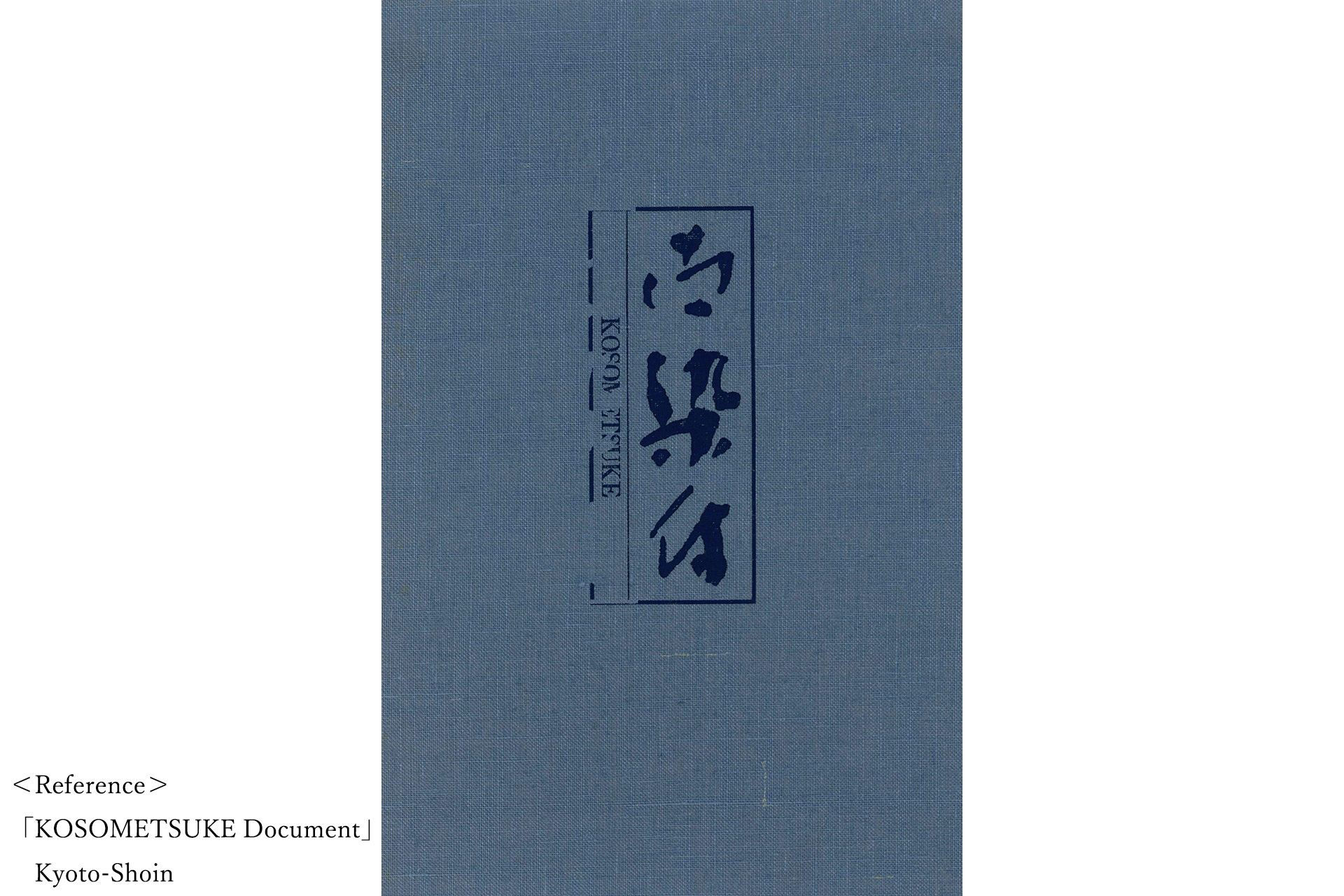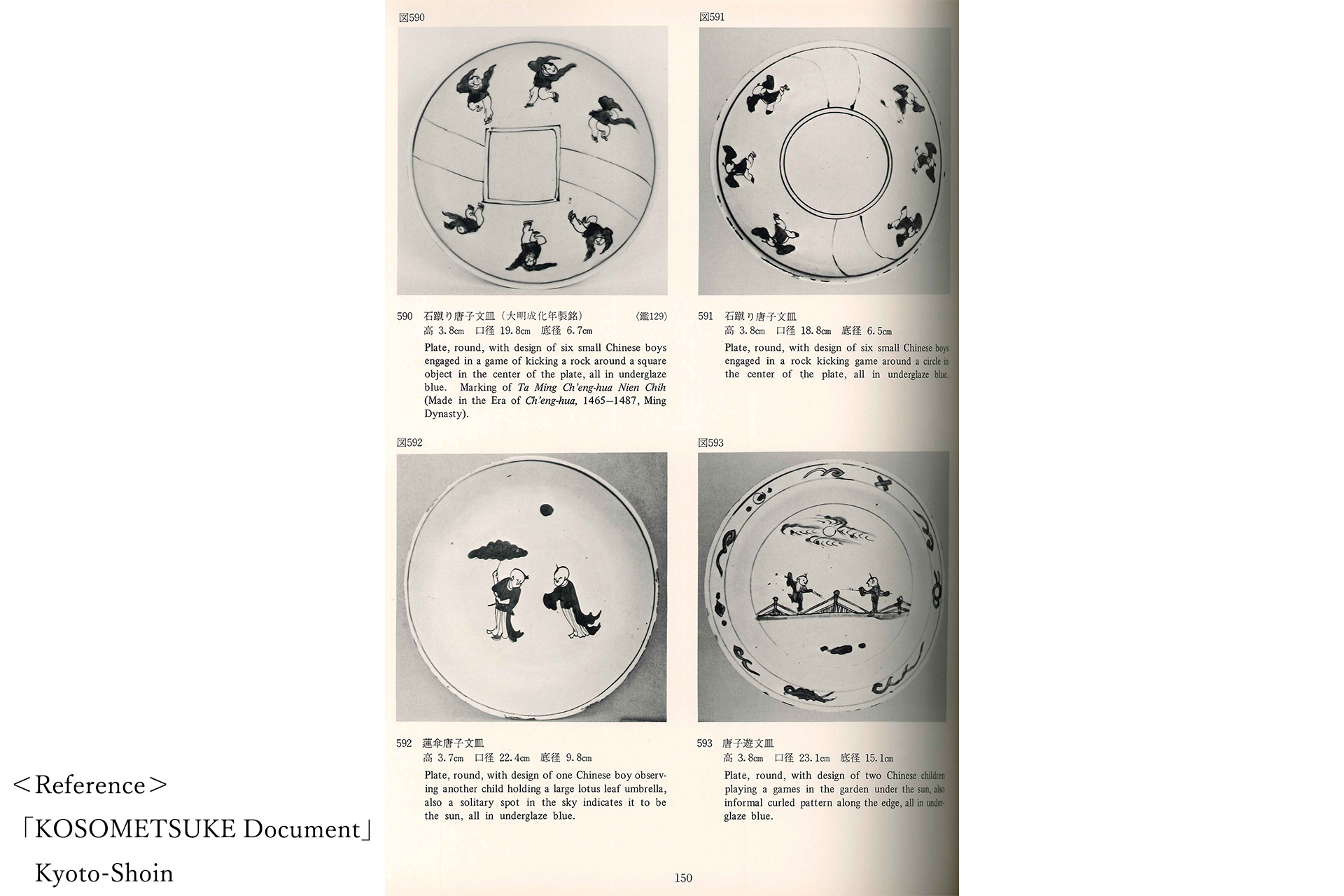Kosometsuke Dish with Design of Chinese Boys(5 Pieces / Ming Dynasty)
1,000,000Yen(Tax Included)
It is the thick kosometsuke that combines two types of design. There is the item written on the box of this kind of work as a "Coin Dish", and the design on old coins has the meaning of amulet in china, and the characters and design written on it represent auspiciousness. The karako(chinese boy)design, which features people playing musical instruments and dancing happily, symbolizes the wish for children to be blessed with many children and for their families and descendants to prosper.
- Period
- Ming Dynasty
Early 17th century
- Weight
- About 361g(1 Piece)
- Diameter
- About 17.7cm
- Height
- About 4.6cm
- Bottom Diameter
- About 7.0cm
- Description
- Paulonia Box(5 Tiered Box)
- Condition
- Excellent Condition(There are mushikui at the edge)
Only 1 piece has a kiln scratch at the bottom
The base , blue and white coloring, and baked are ideal, and they are in excellent condition.

Many kosometsuke still exist in japan, and as imported products, they were a luxury item that was in demand by the powerful and wealthy. There is also a huge difference in quality, and high quality works that are kept in excellent condition have become very popular in recent years.
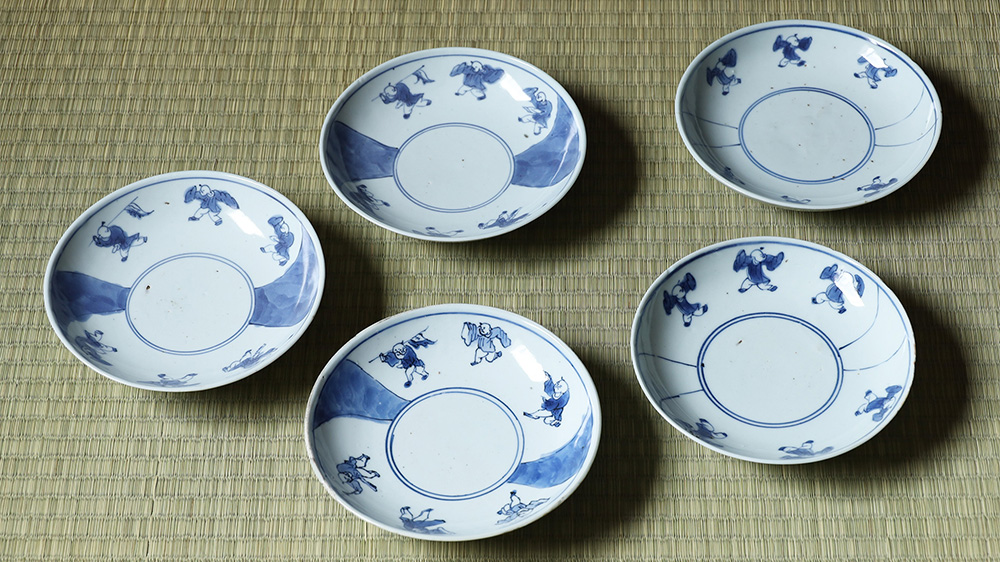
The karako is a child with chinese style hair and clothing. Karako design was established from the desire to be blessed with children, the safety of the family, and the prosperity of descendants. This design has been strongly inherited in hirado ware.
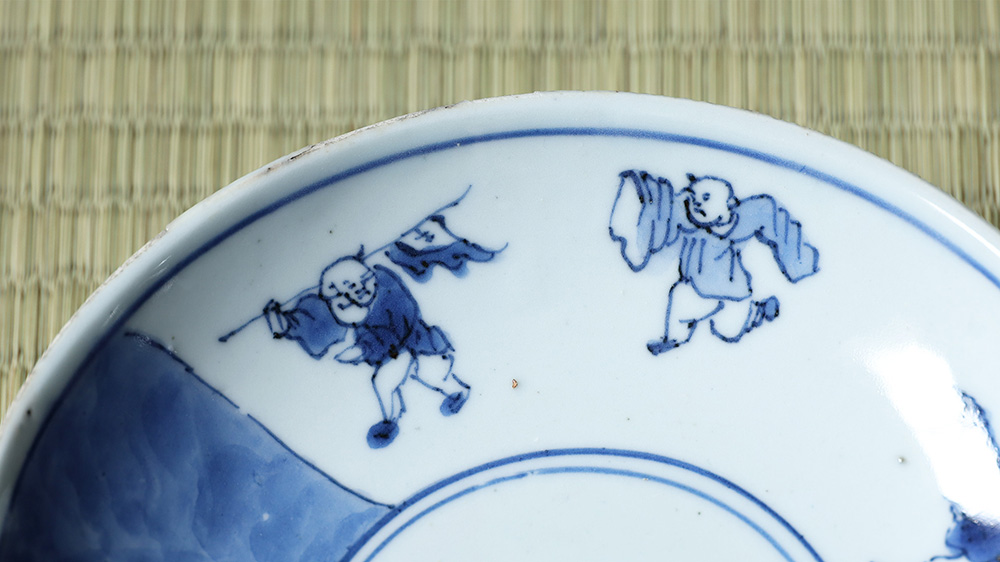
The children are playing musical instruments and dancing happily. This work is perfect for the boy’s festival and peach festival, which wish for the healthy growth of children, or to celebrate your precious child’s special day.
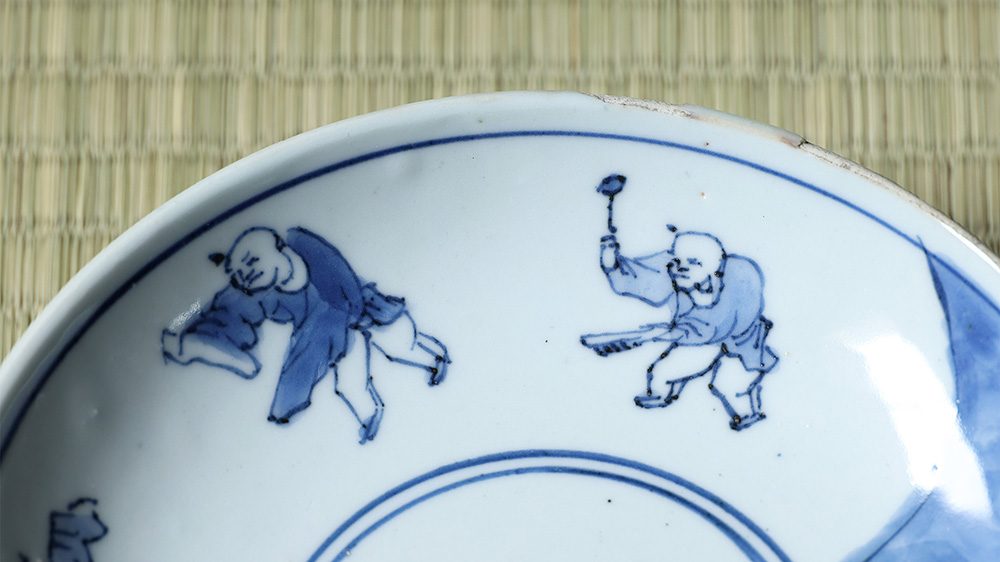
It is very rare that all 5 pieces are perfectly aligned. Rosanjin Kitaoji also liked kosometsuke and wrote, “Good tableware and good furniture make food taste better”.
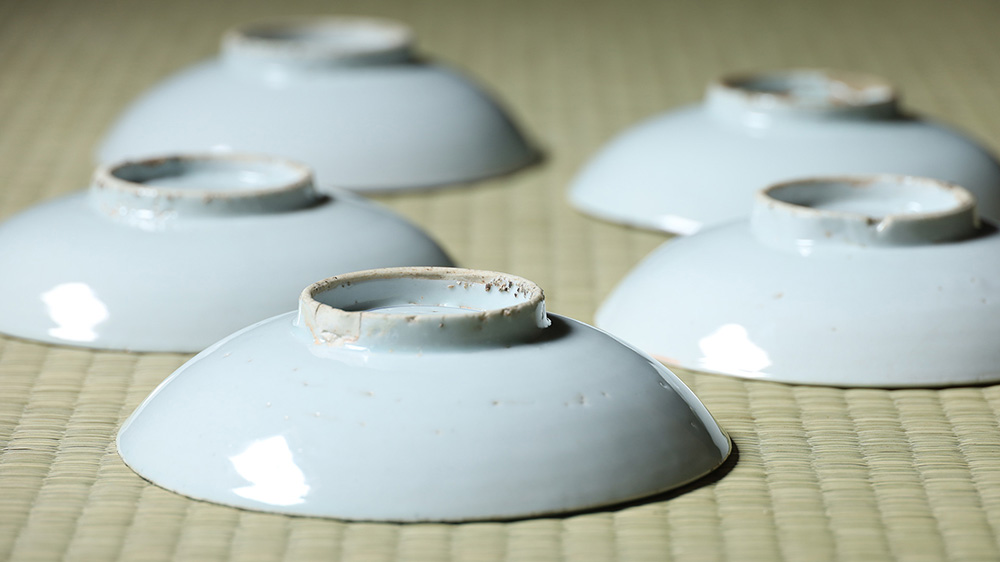
Kosometsuke and japanese cuisine go perfectly together, adding a touch of formality to your table. The size of approximately about 18.0cm also fits well into a tray.
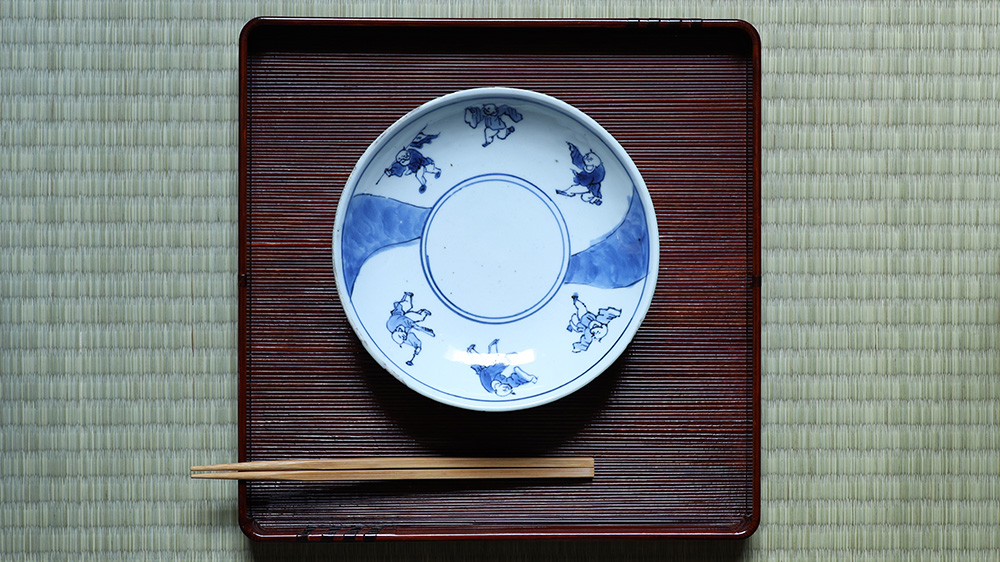
Kosometsuke
Kosometsuke refers to the blue and white(sometsuke)porcelain that were fired at the jingdezhen kiln in china, mainly during the late ming dynasty’s tianqi era(1621-27). These works were made especially for japan and many of them remain in the country. In contrast to the qing dynasty’s blue and white porcelains, known as shin-watari(new-watari), a unique group belonging to the old style ko-watari(old-watari)blue and white porcelains are now independently referred to as “Kosometsuke”. These porcelains can be broadly divided into tea utensils ordered by master of tea ceremony and everyday items. The kosometsuke of tea utensils, which were popular among the japanese, have a thick and heavy overall appearance, possibly due to the use of a thick clay base. At the end of the ming dynasty, there was a trend among japanese master of tea ceremony to order and fire unique tea utensils, with each master of tea ceremony ordering their preferred tools. Many kosometsuke works have glaze peeling off due to differences in the shrinkage rates of the clay and glaze, exposing the inner clay. This phenomenon, which resembles the appearance of being eaten by worms, is called “Mushikui(worm eaten)”. One characteristic is that mushikui(some holes)can often be found in areas where the glaze is thinly applied, such as the rim or angular parts. While this might be considered a flaw in ordinary porcelains, master of tea ceremony found elegance in this natural phenomenon and appreciated the rough taste, valuing it as an aesthetic effect.



